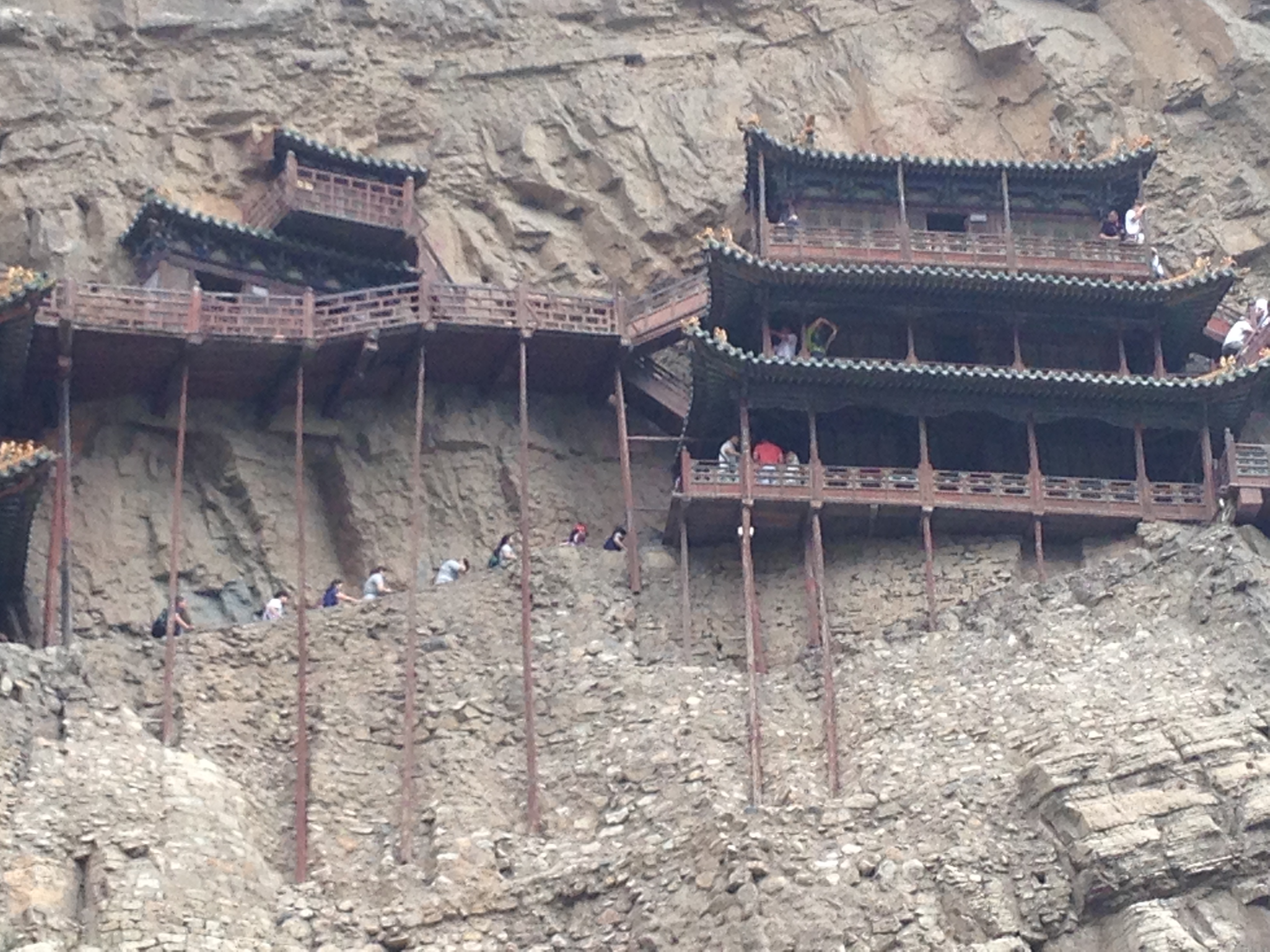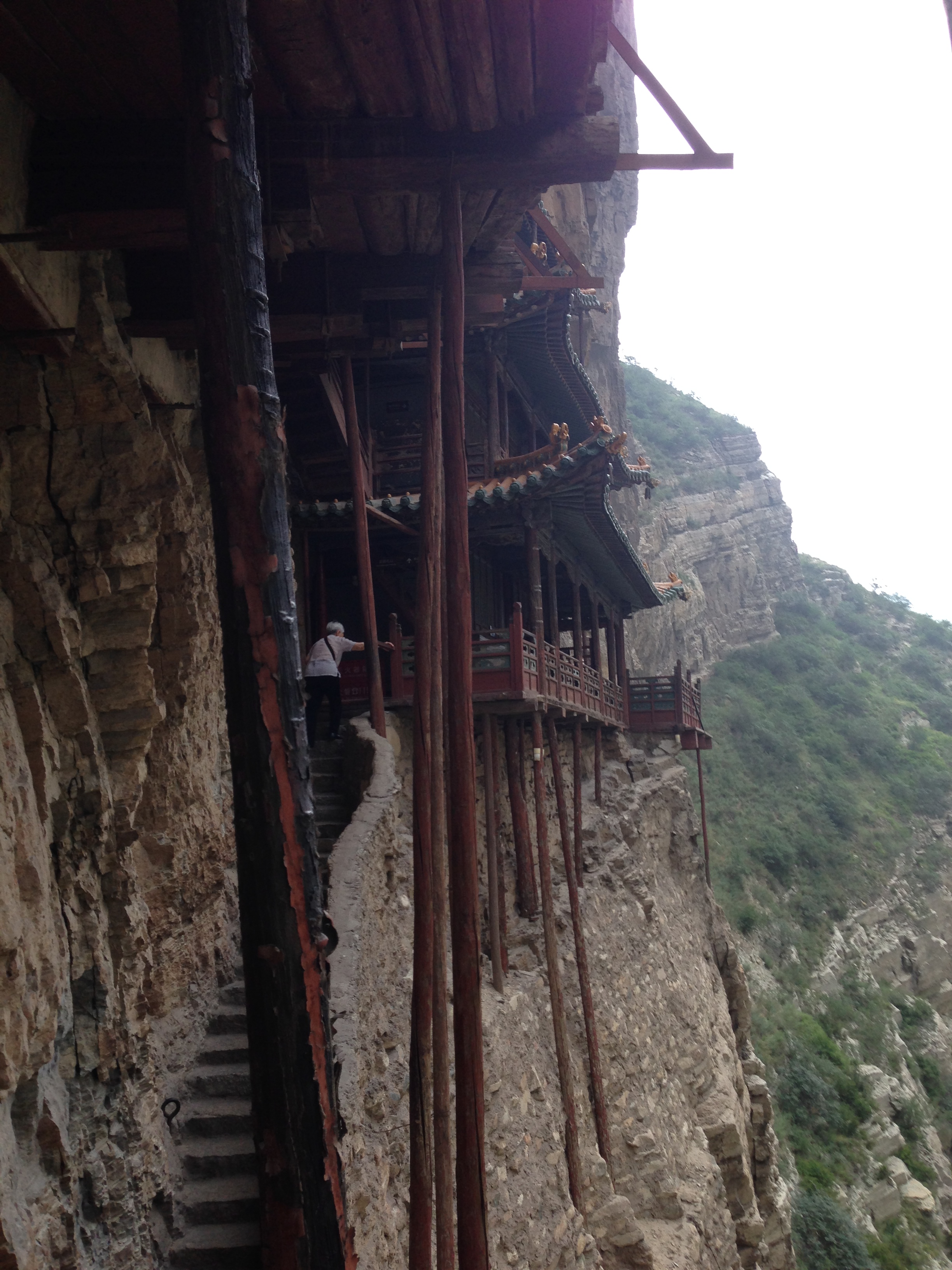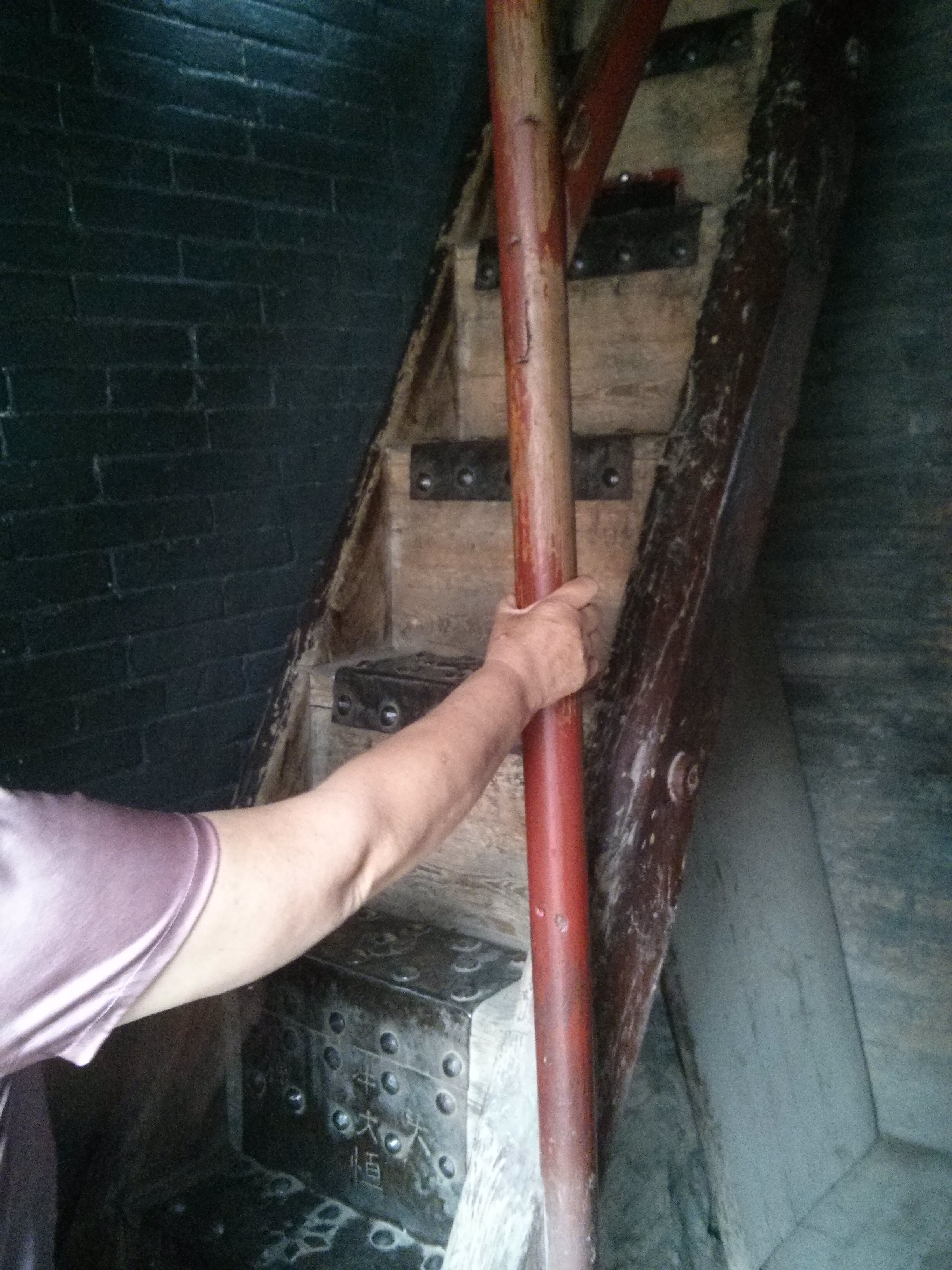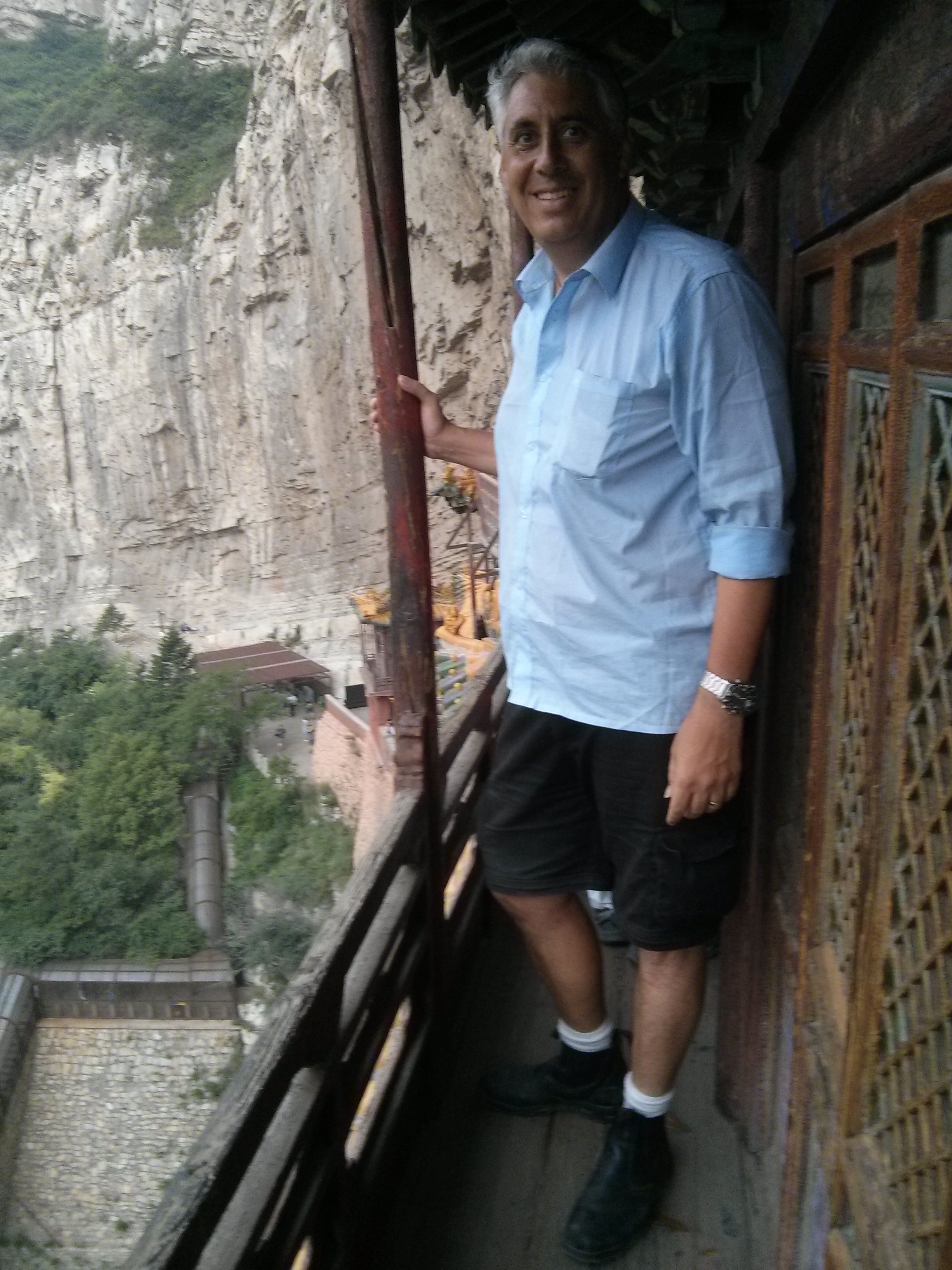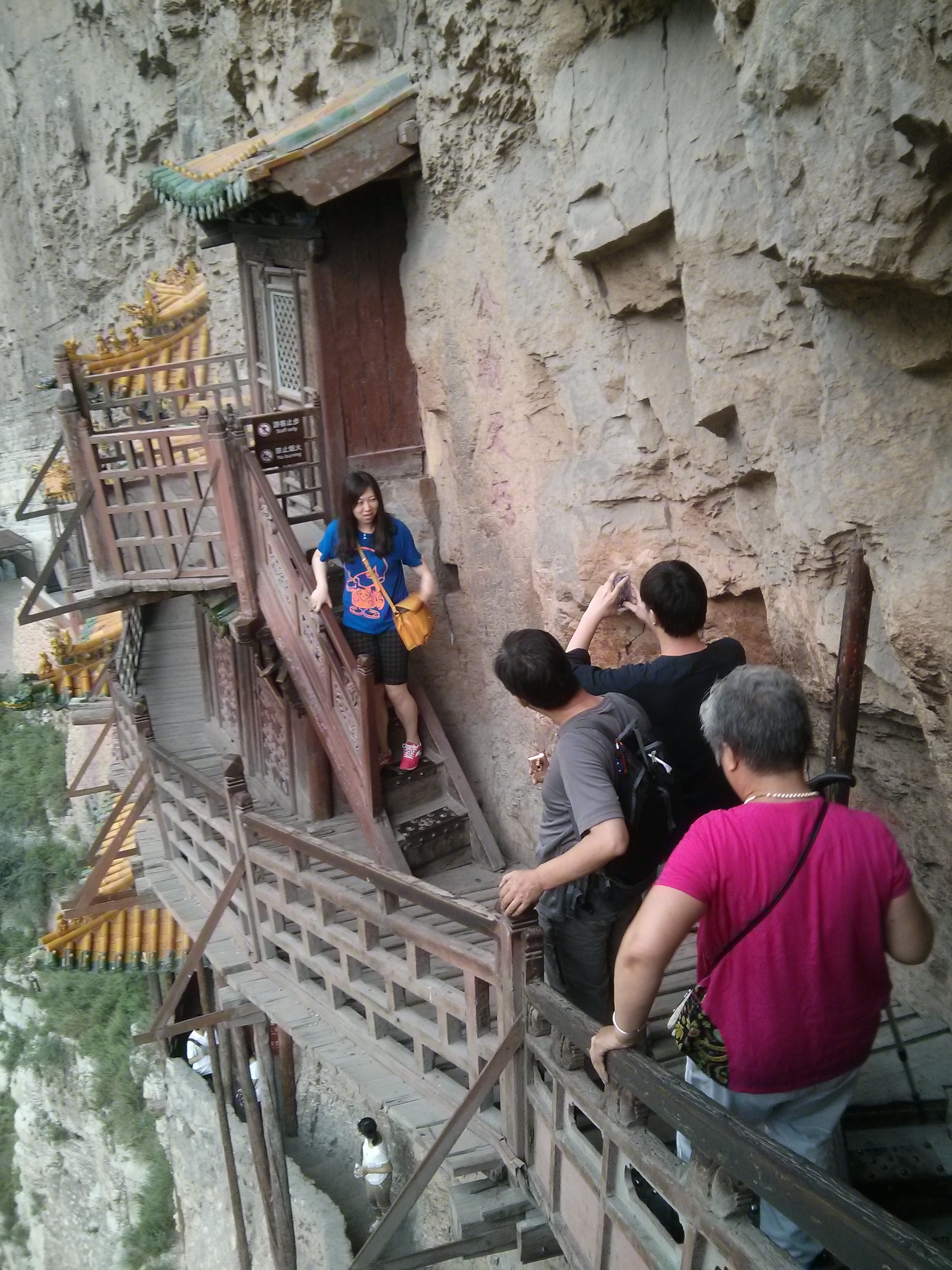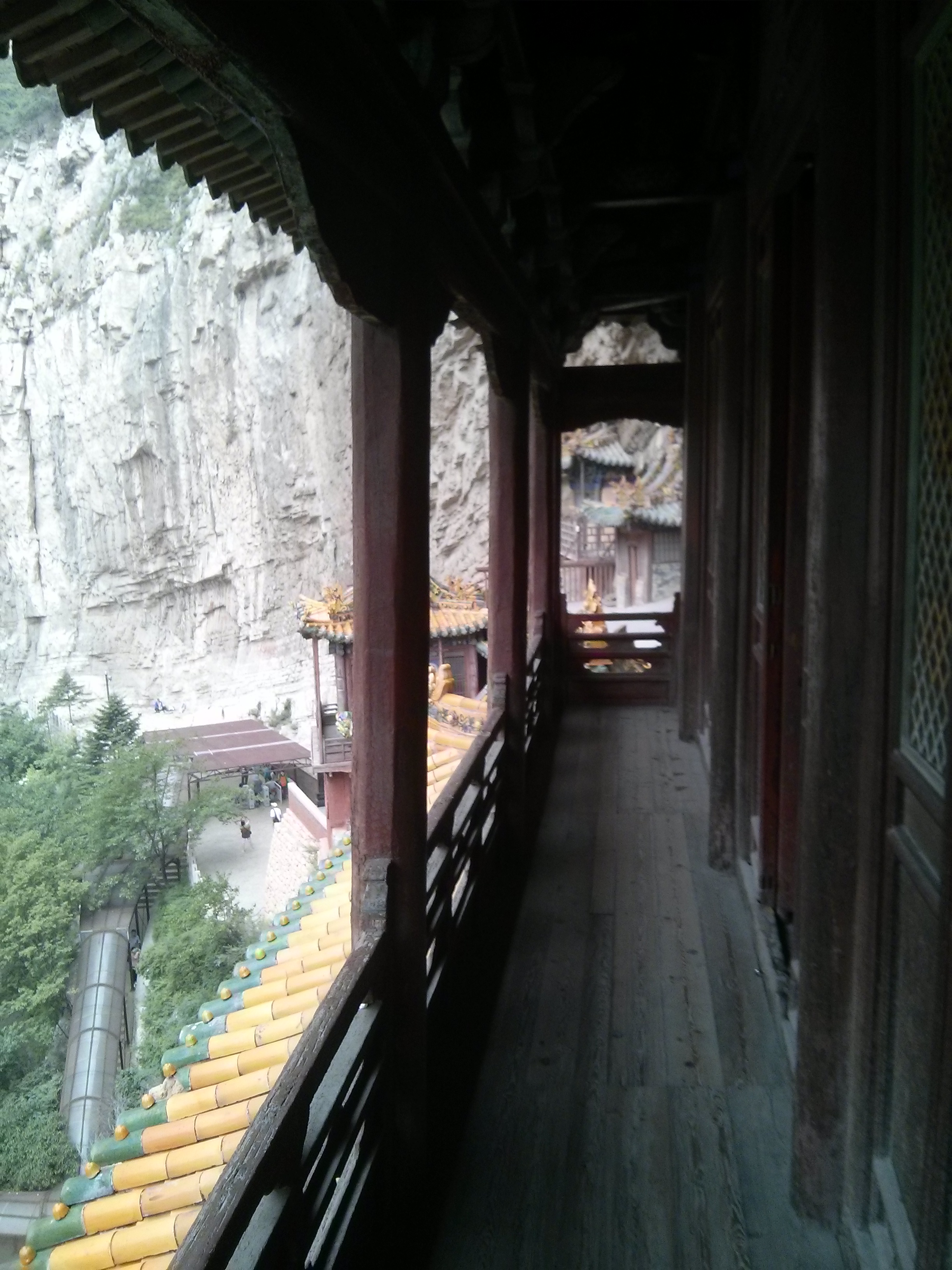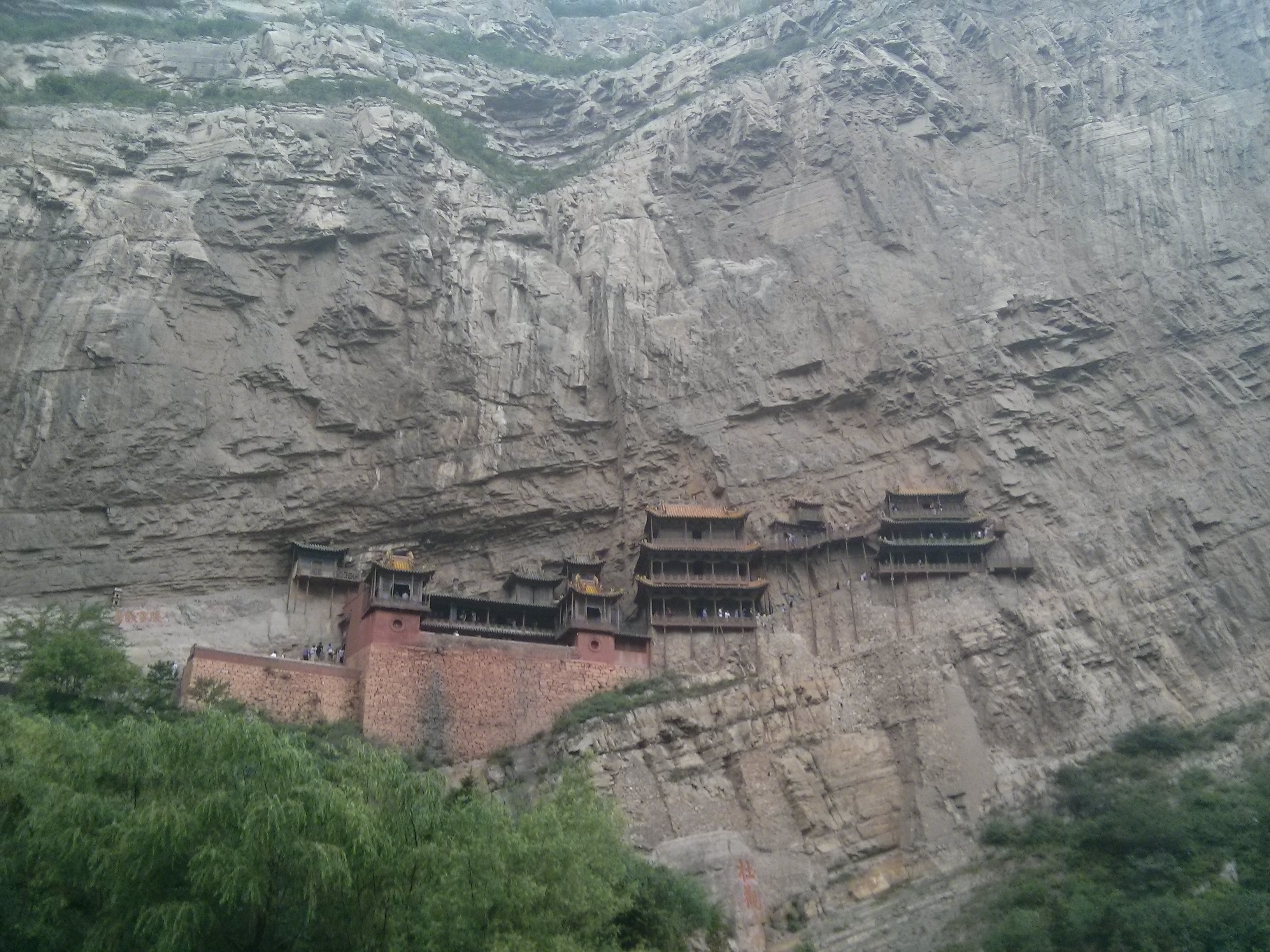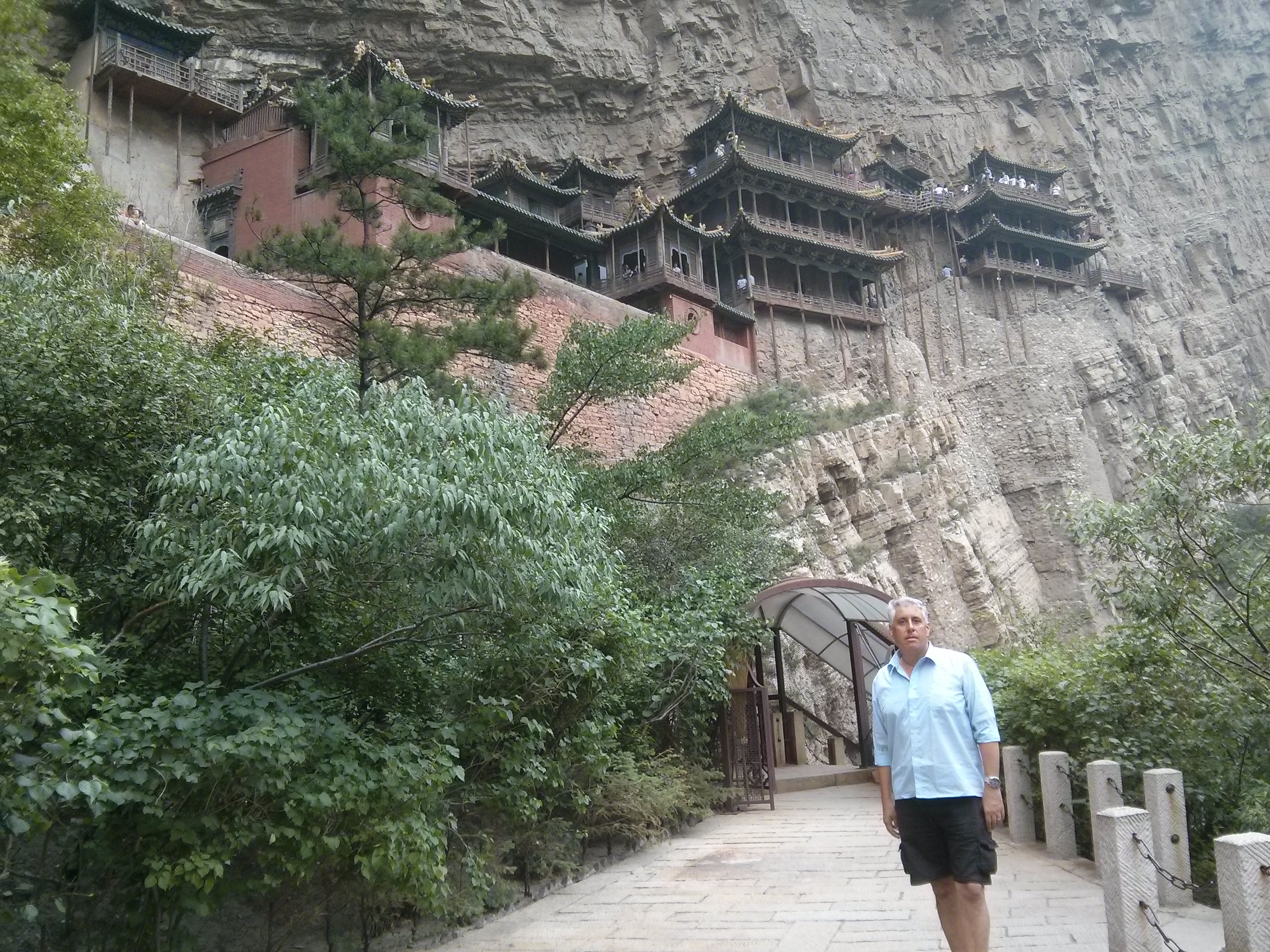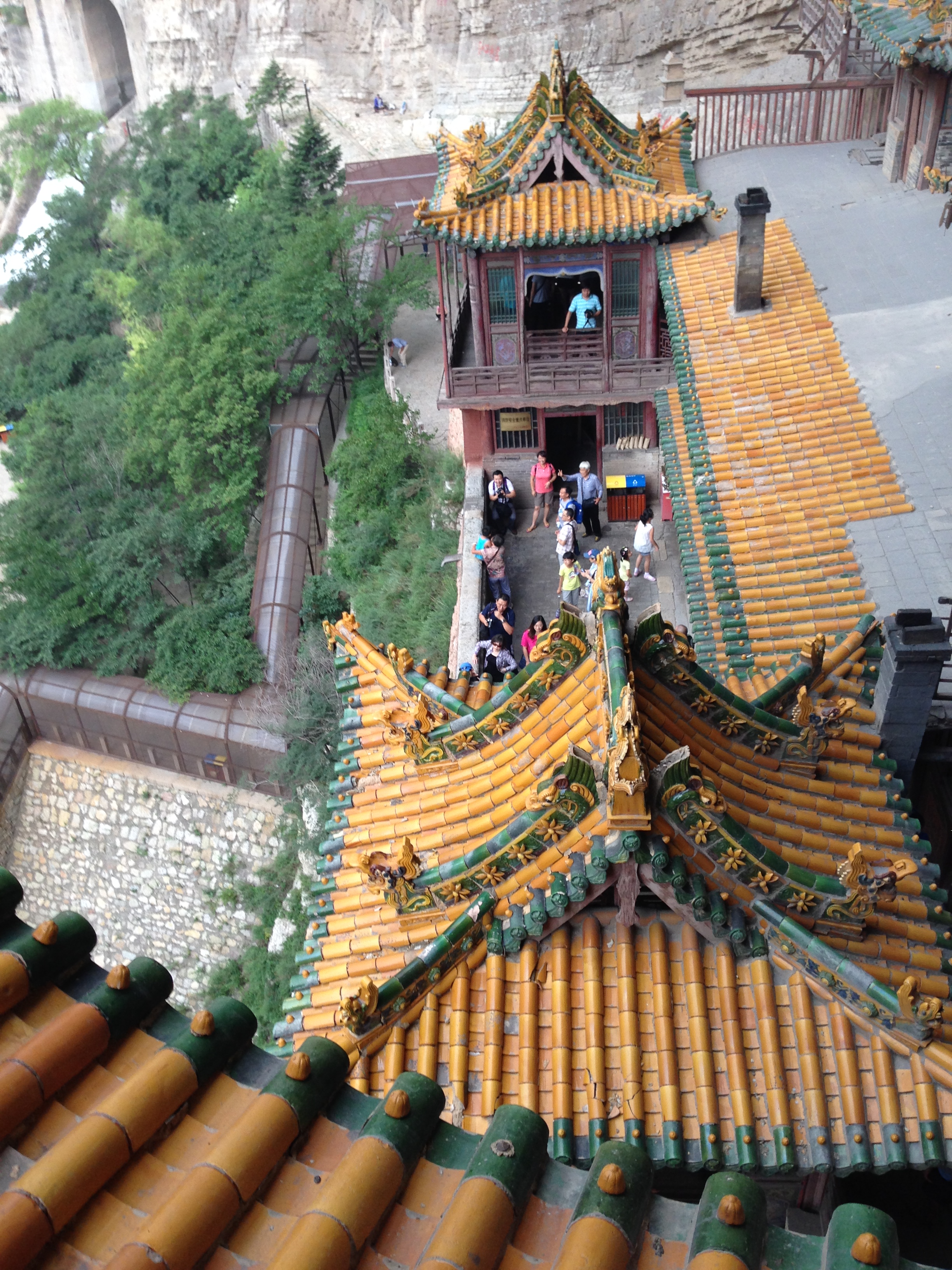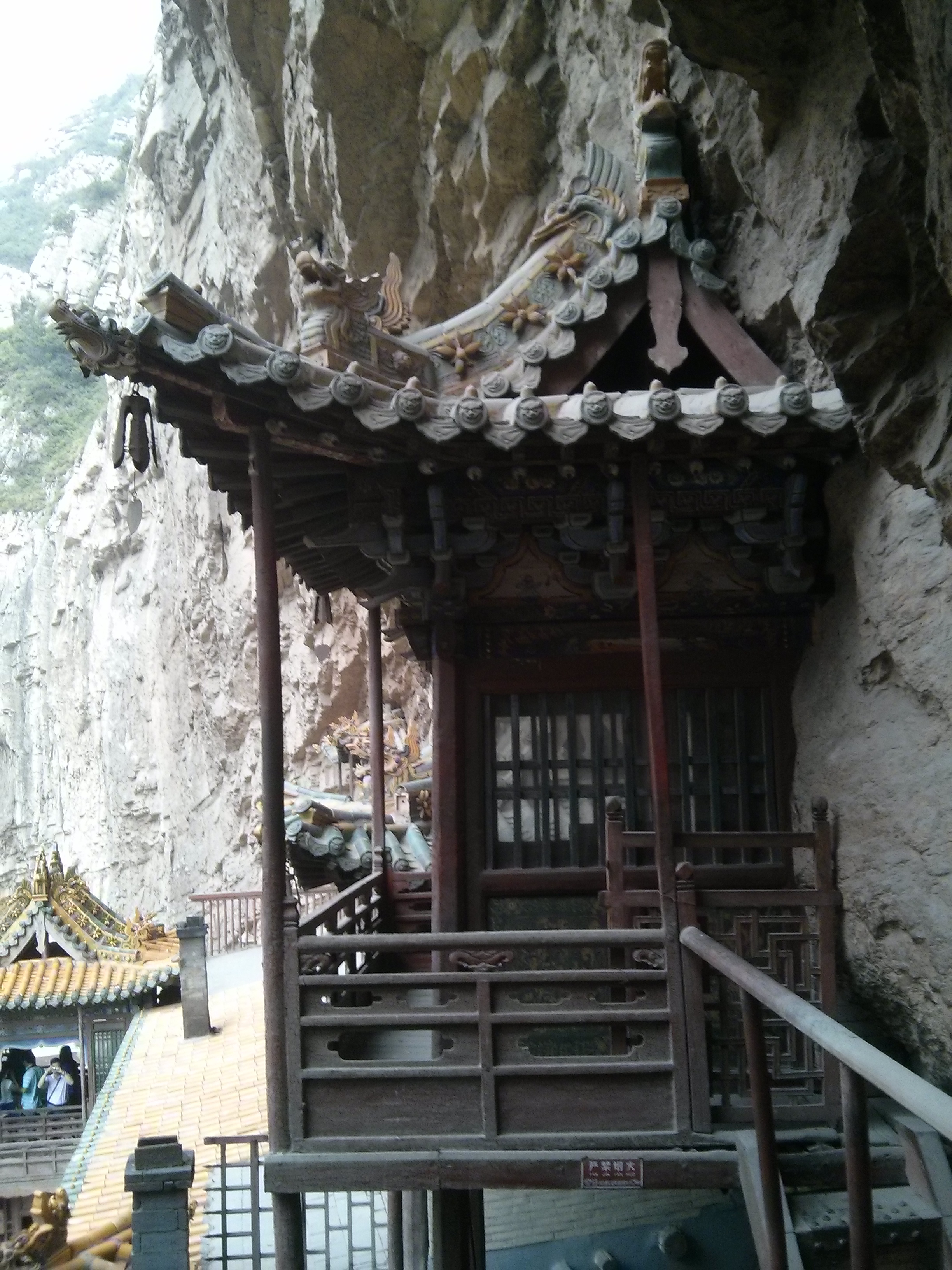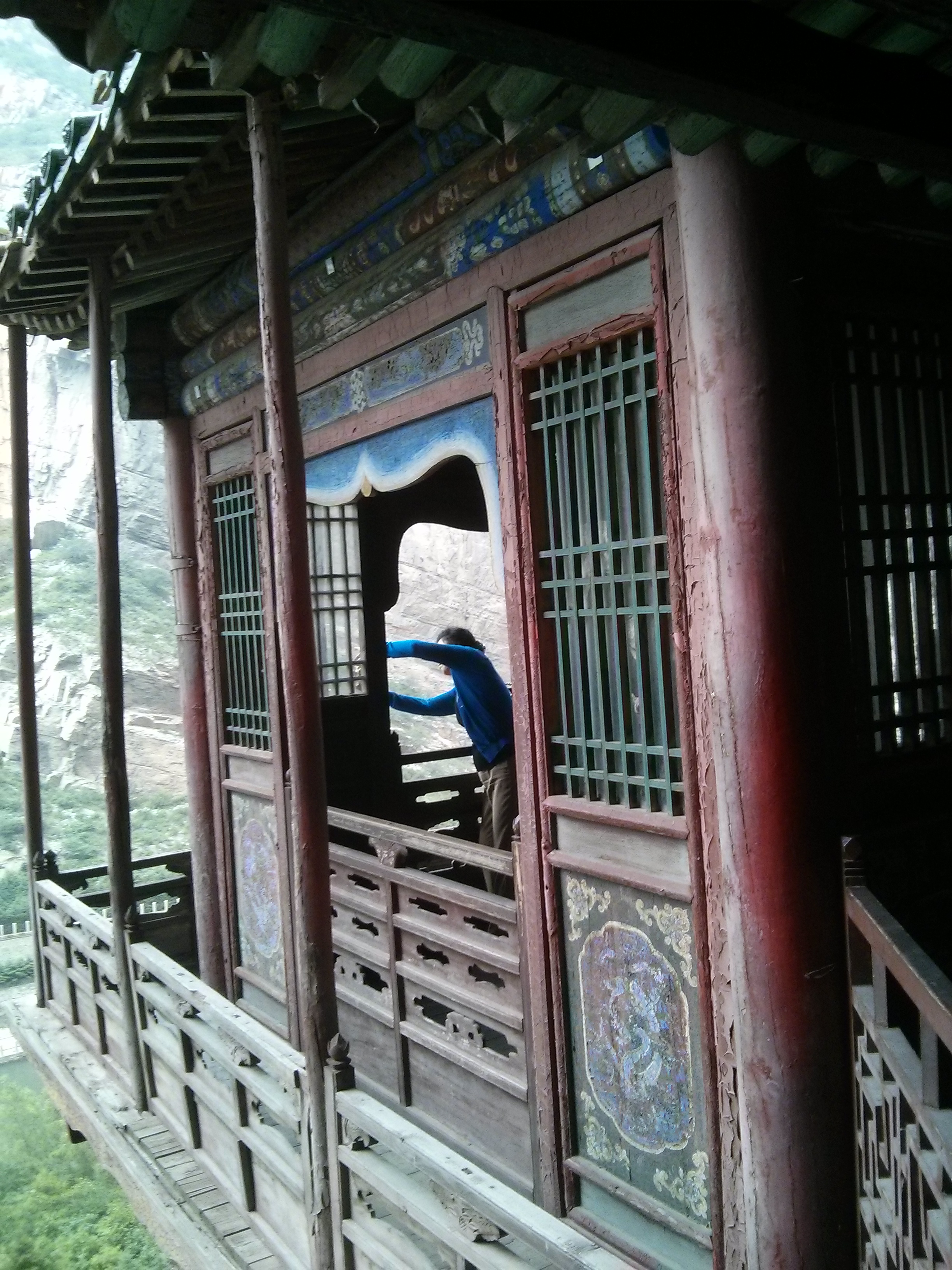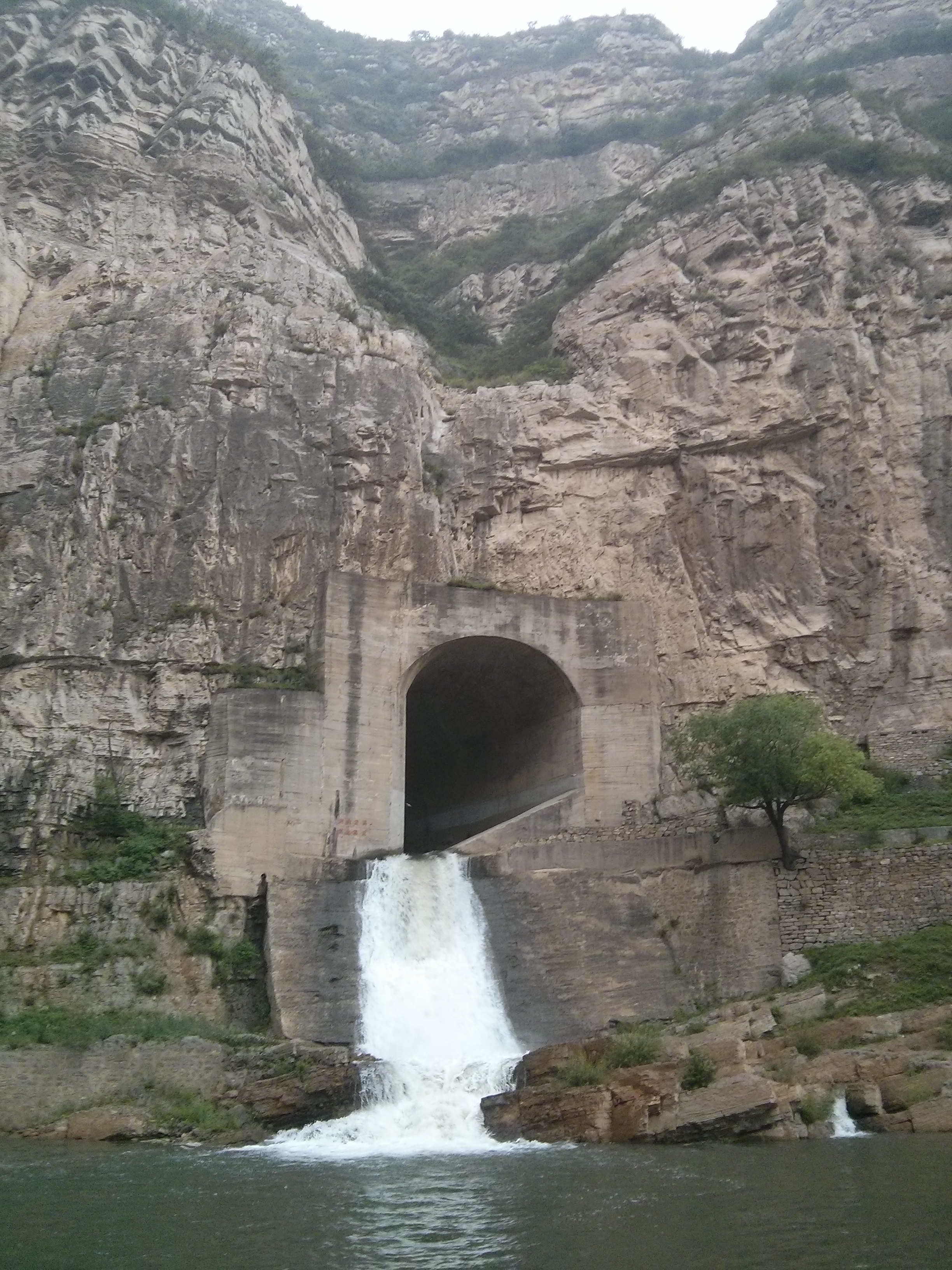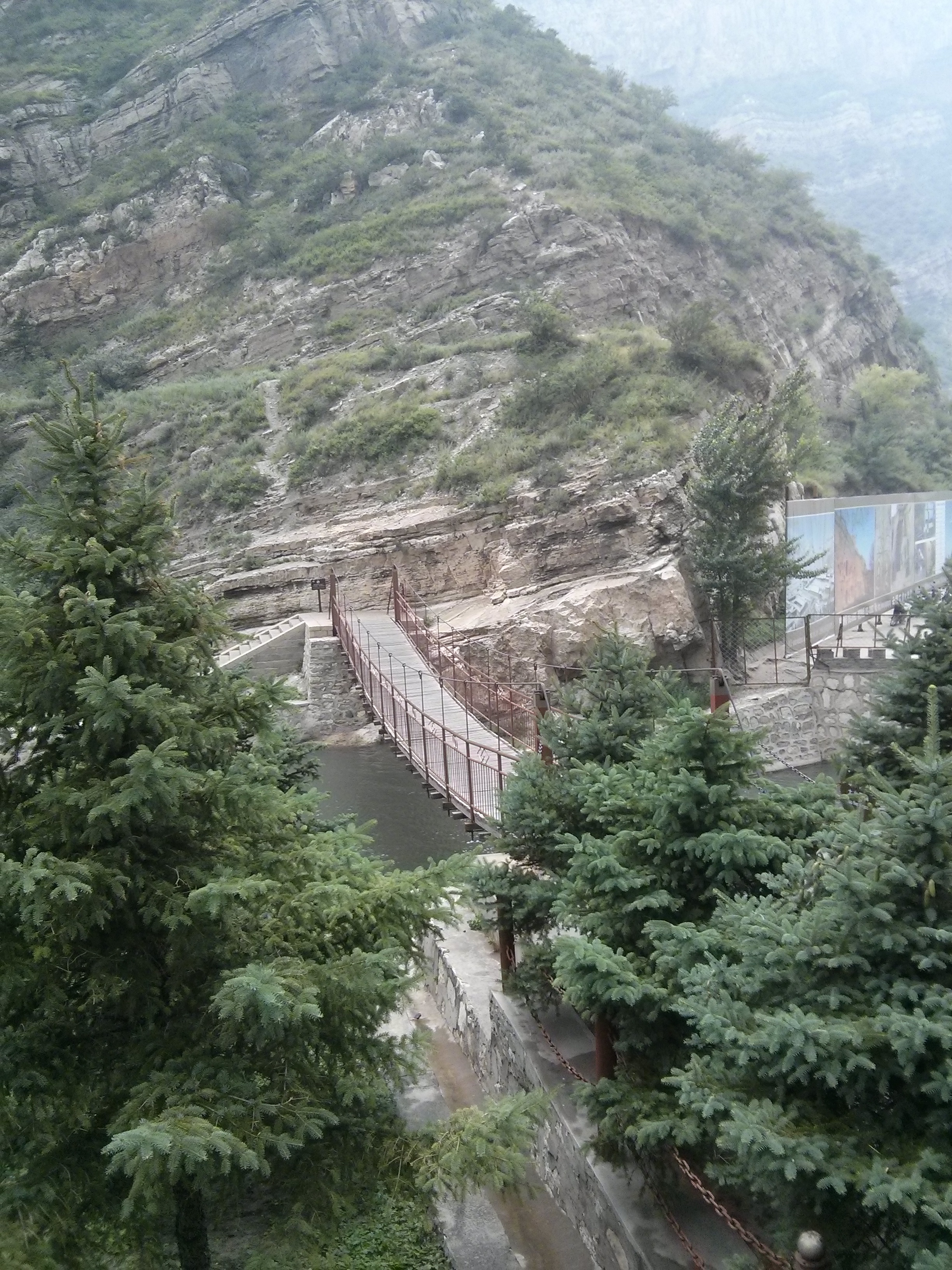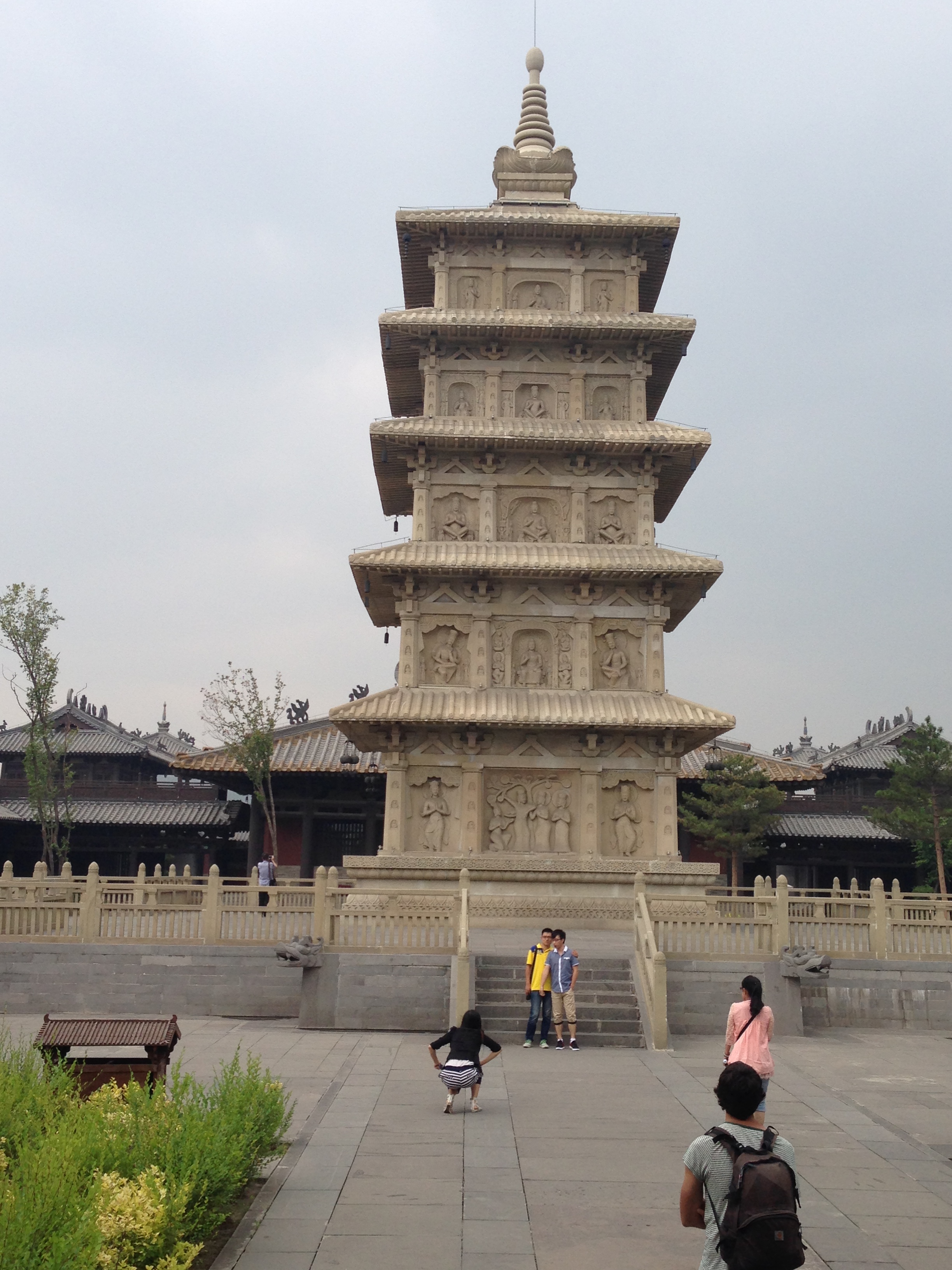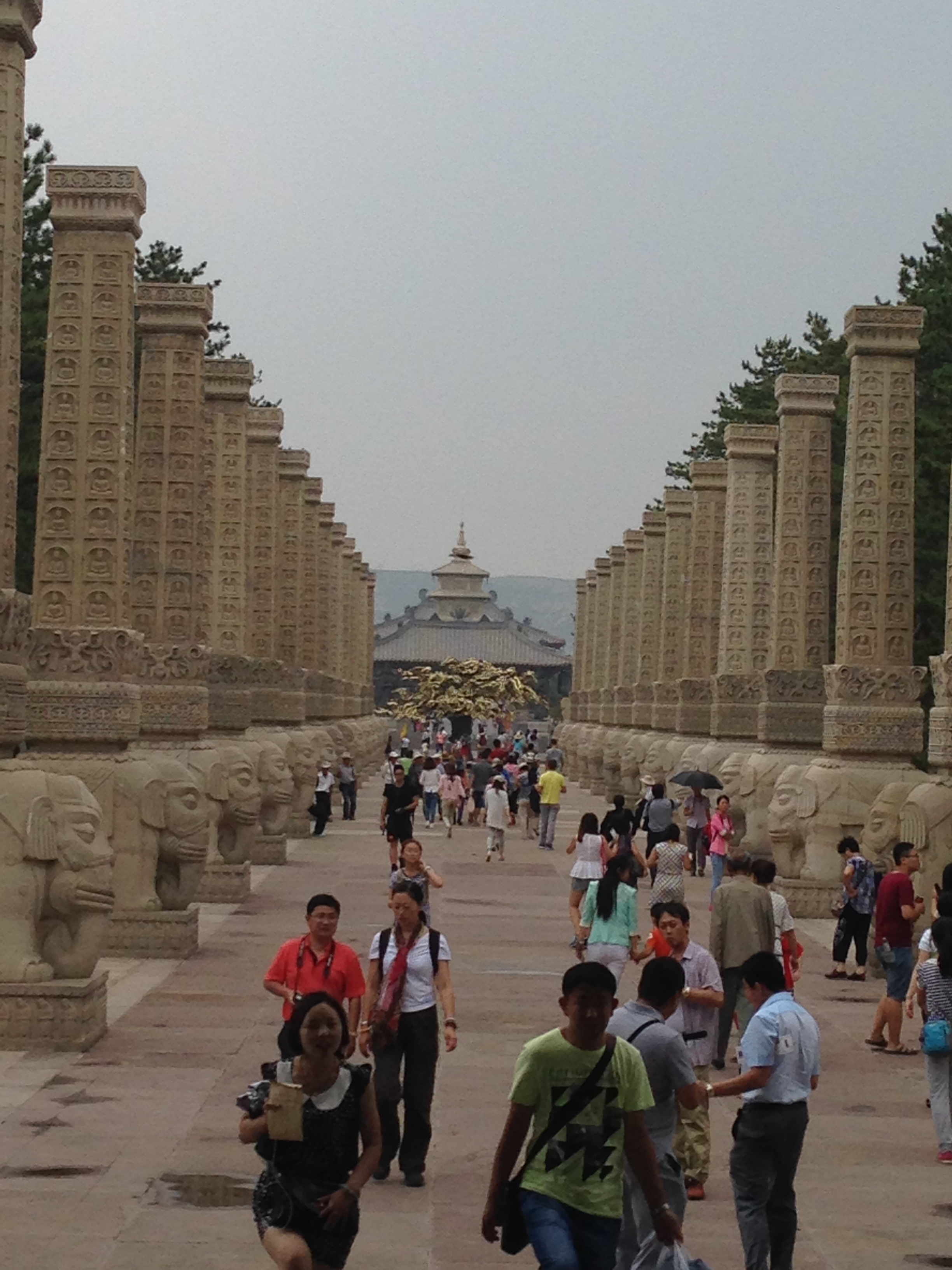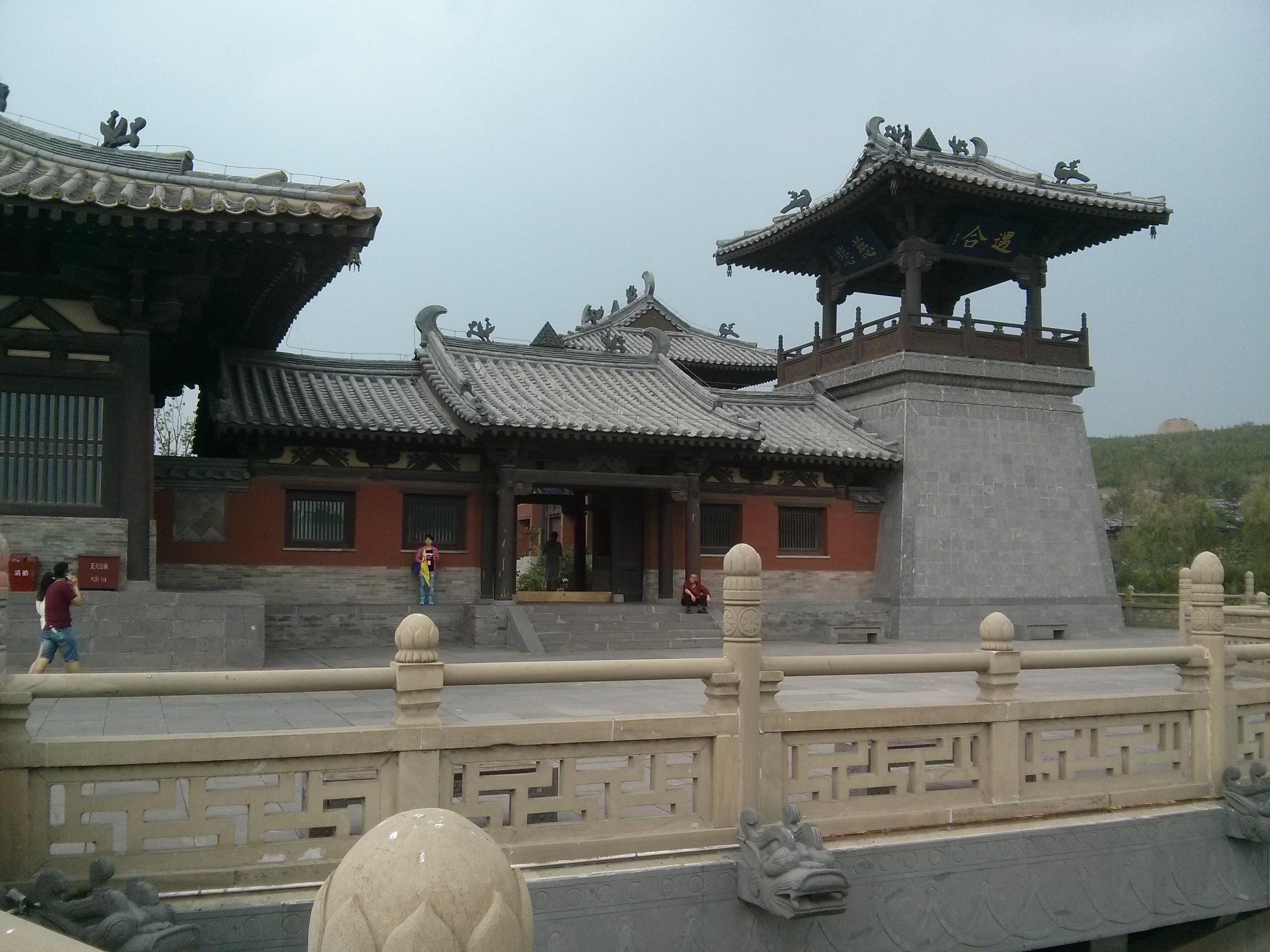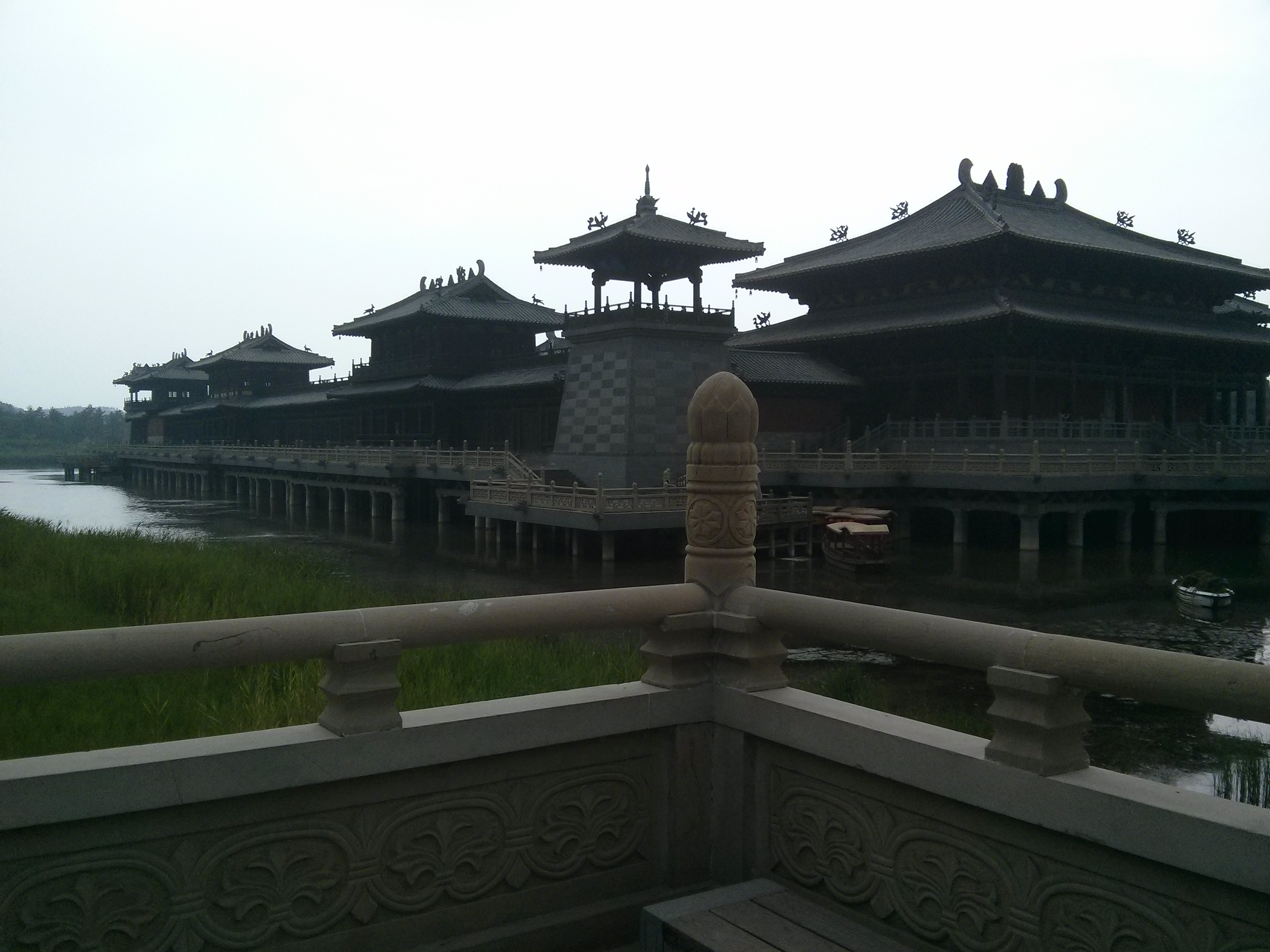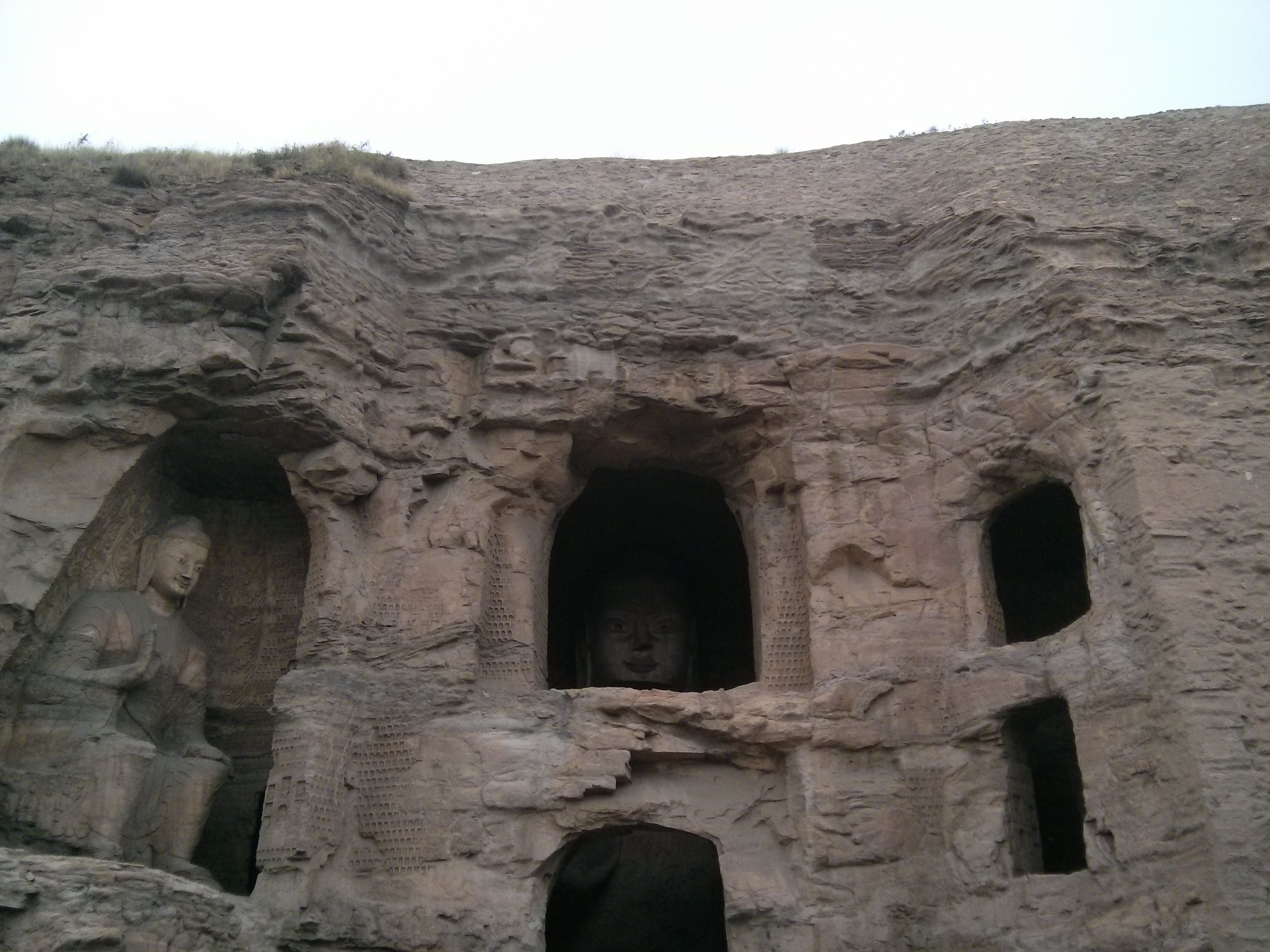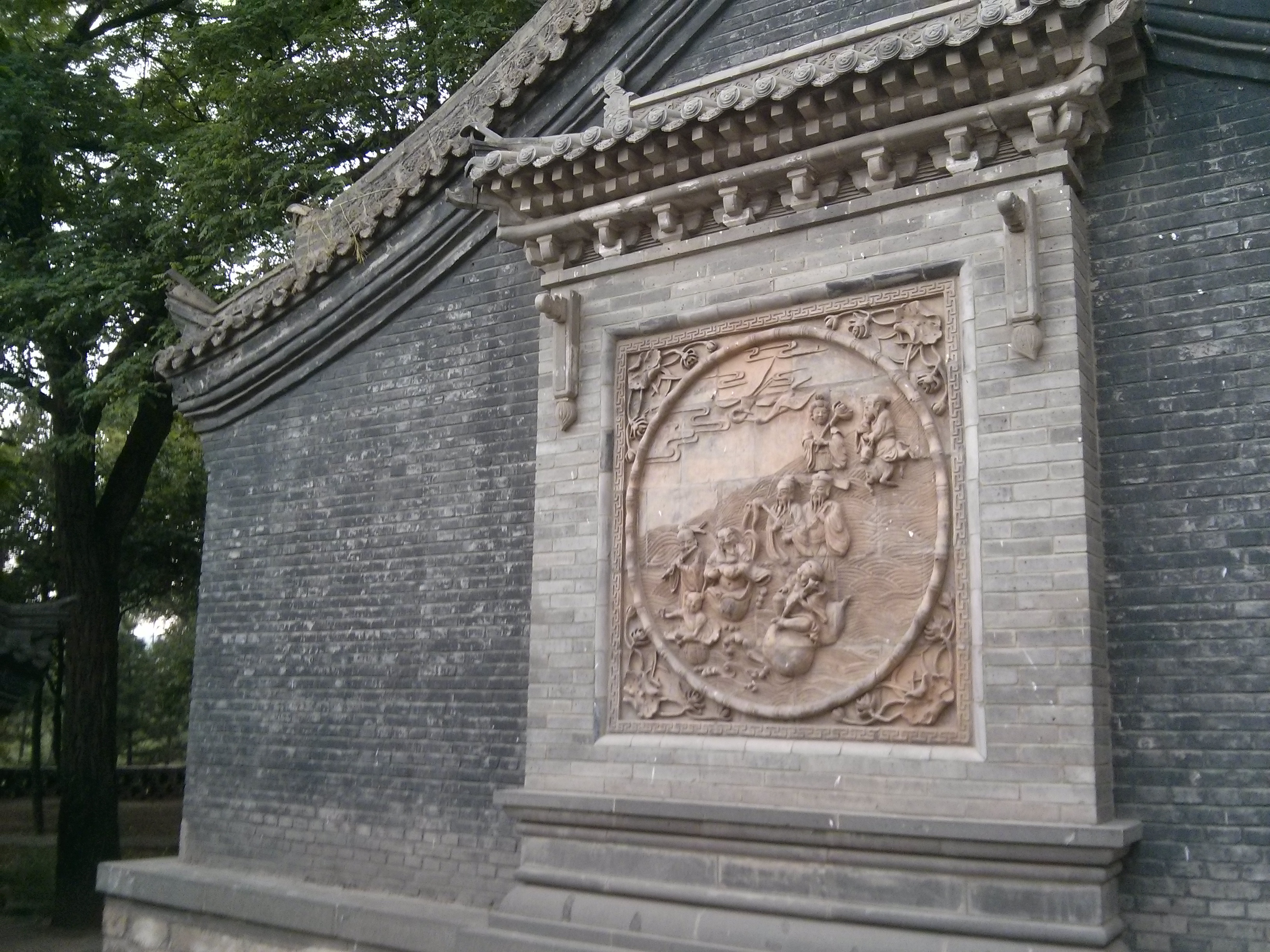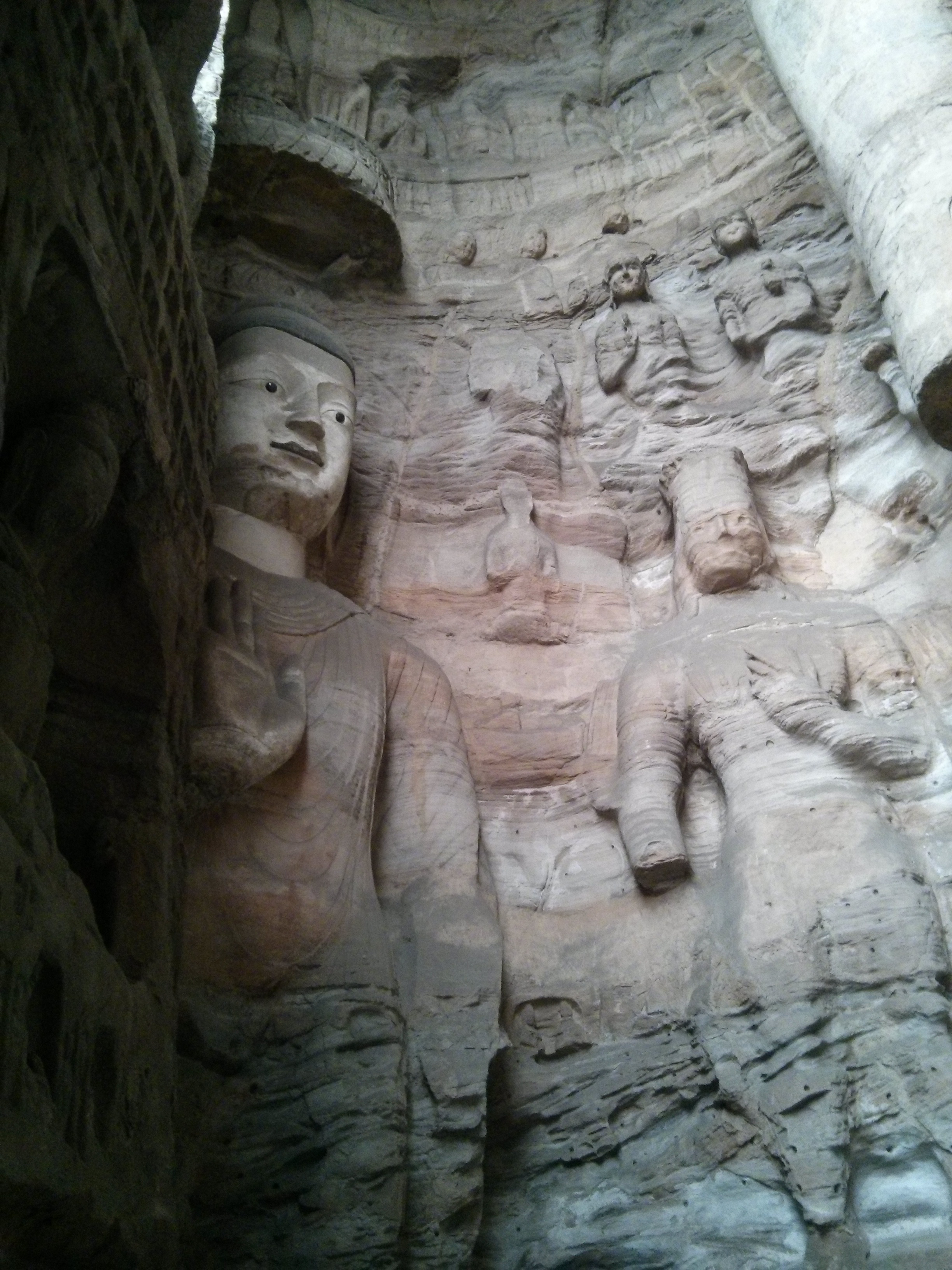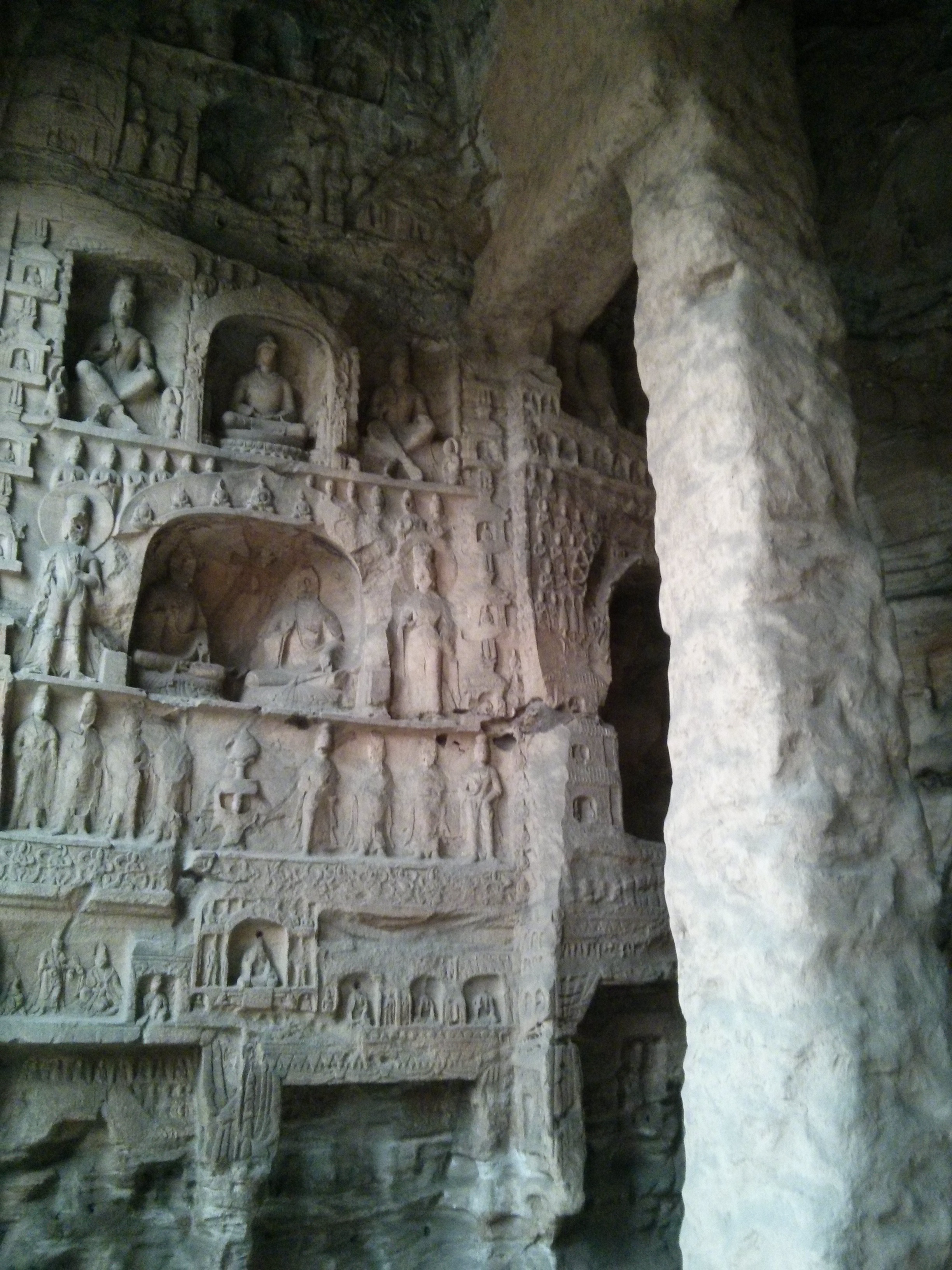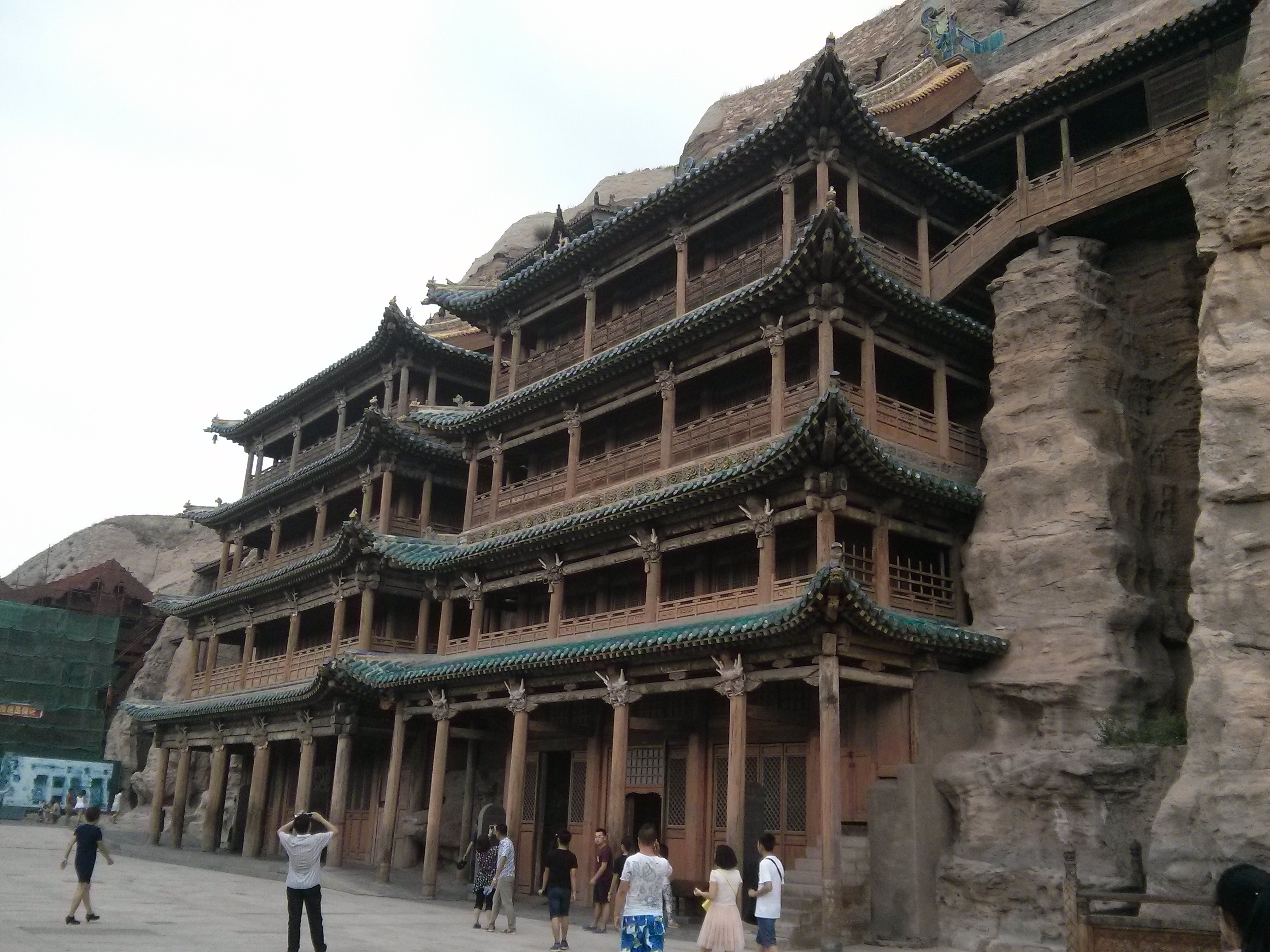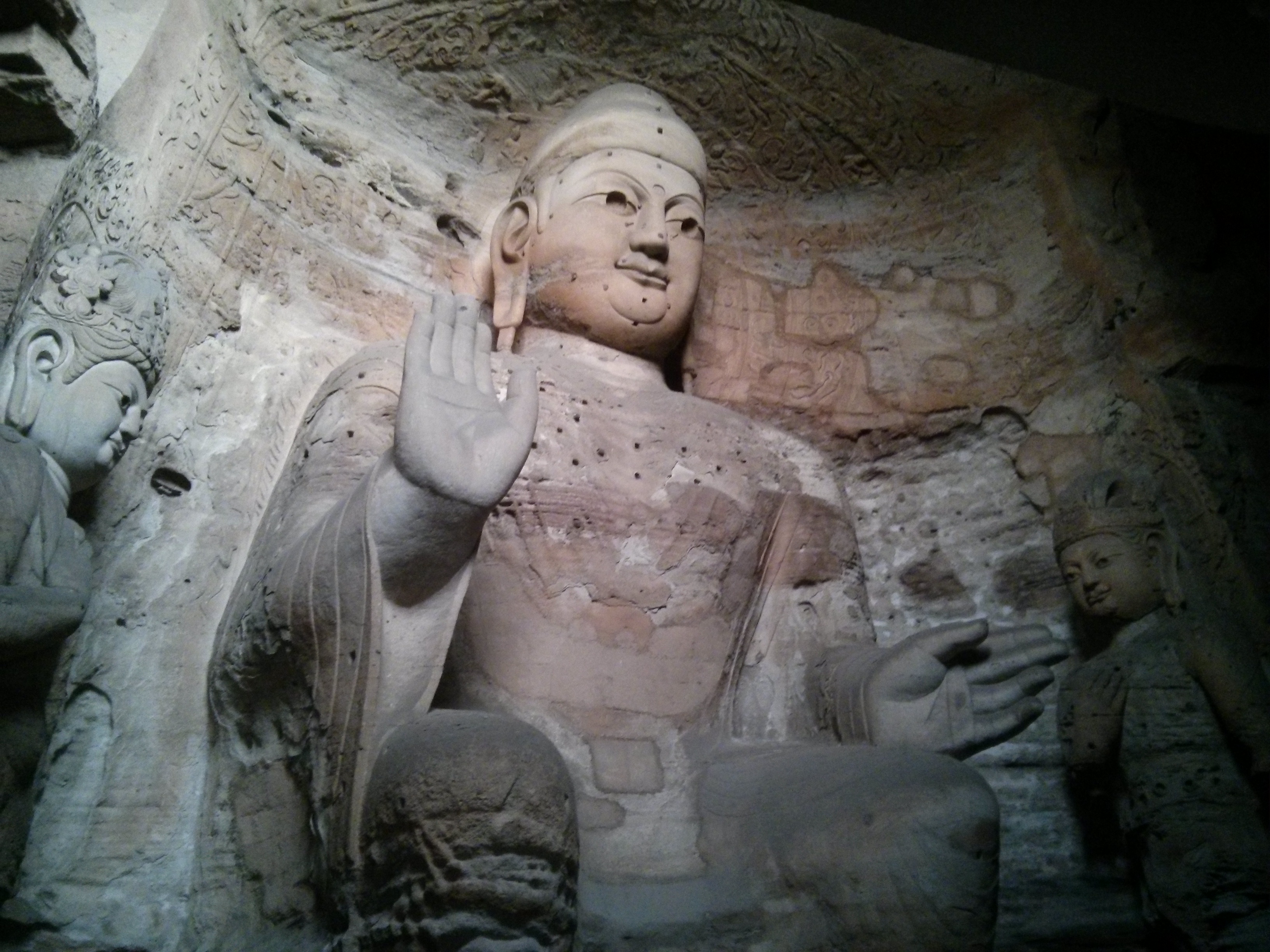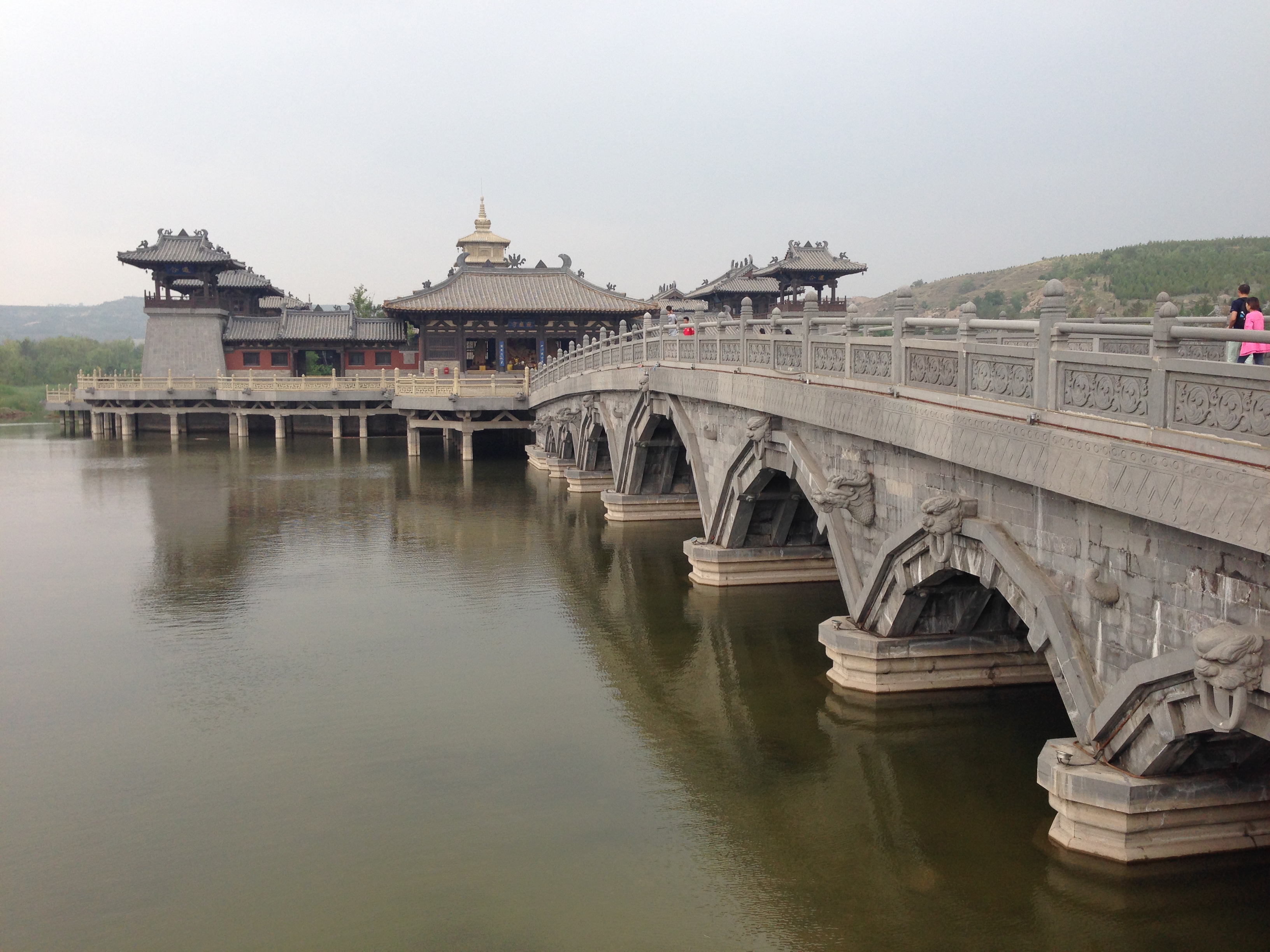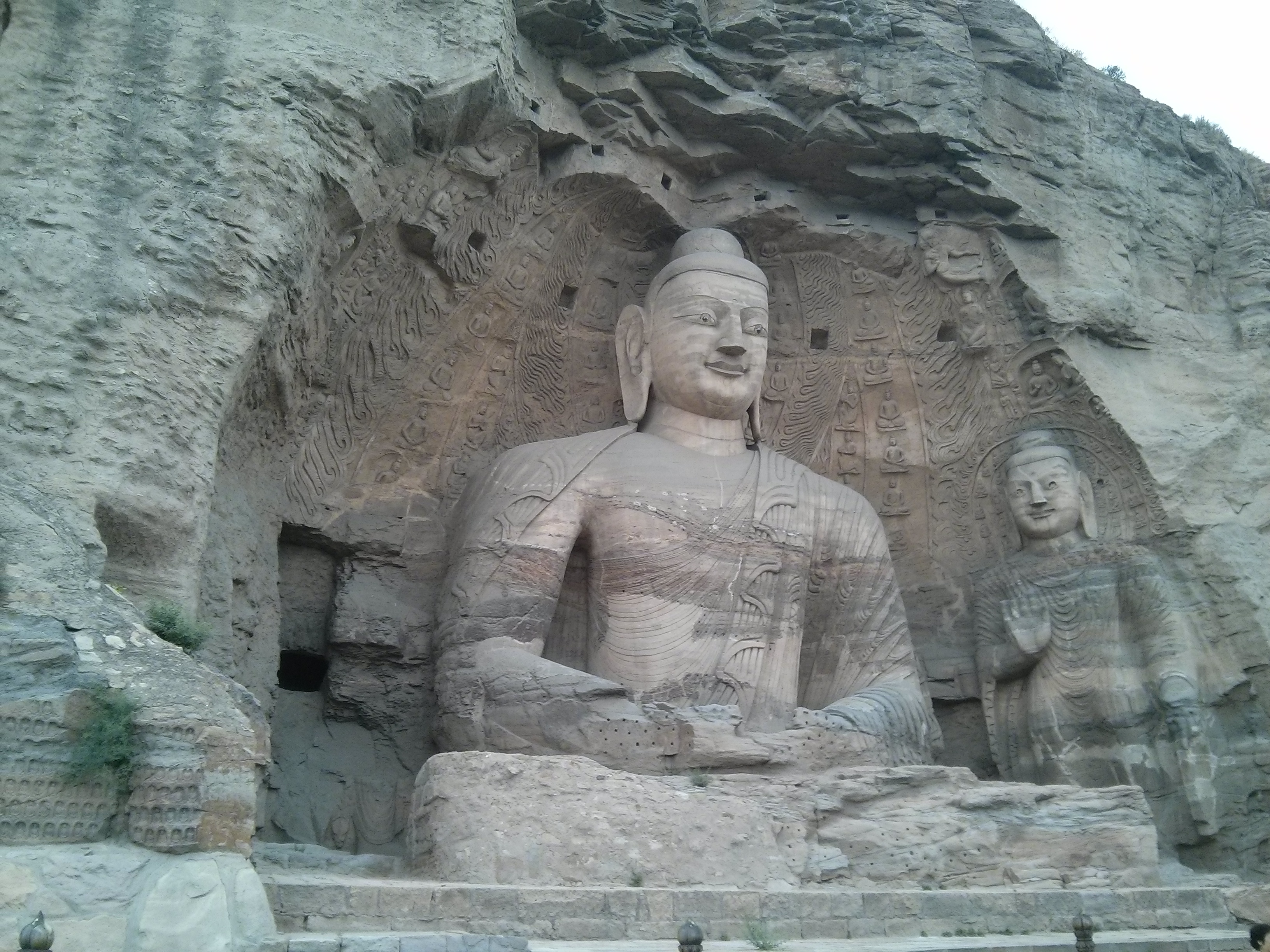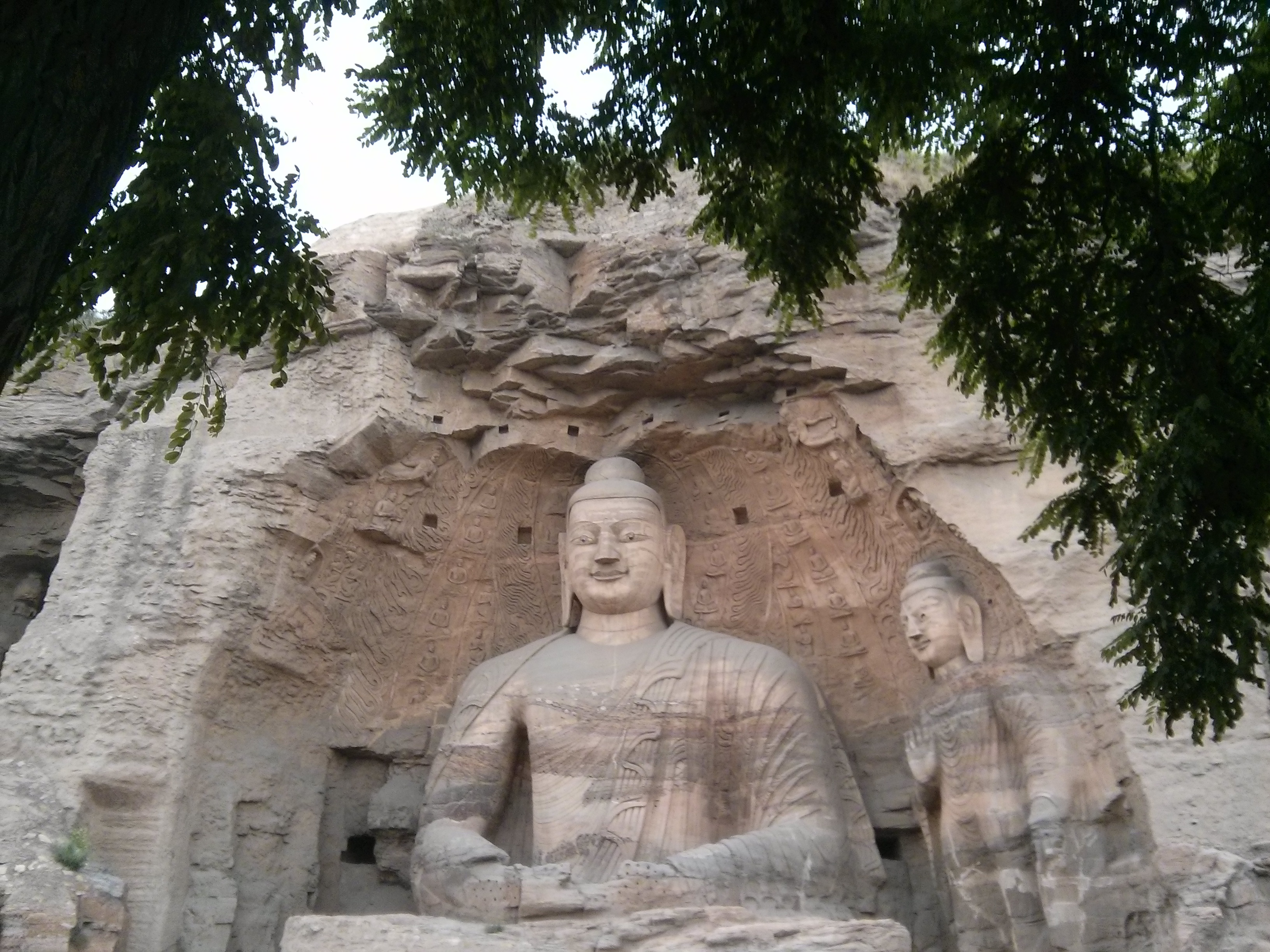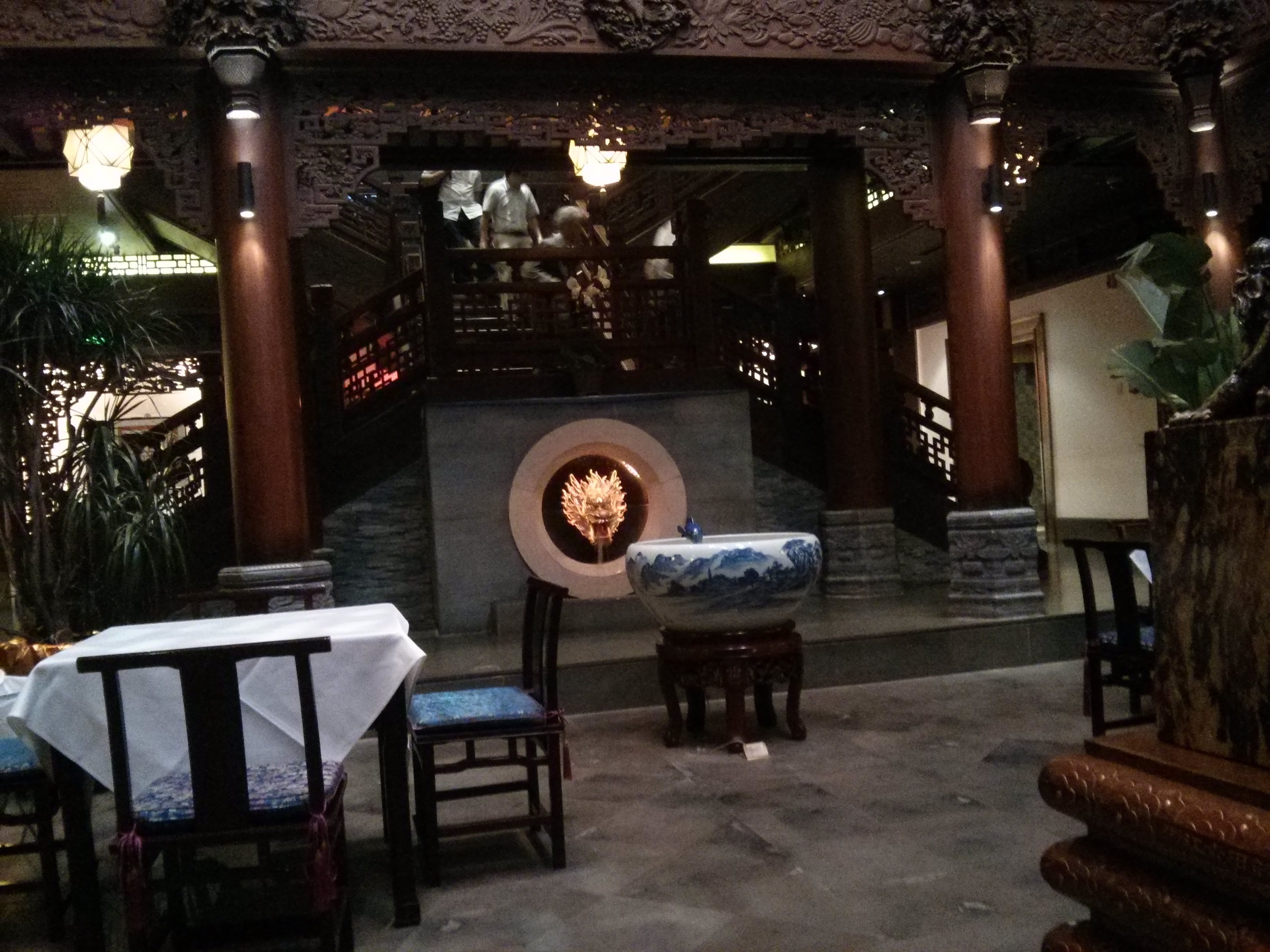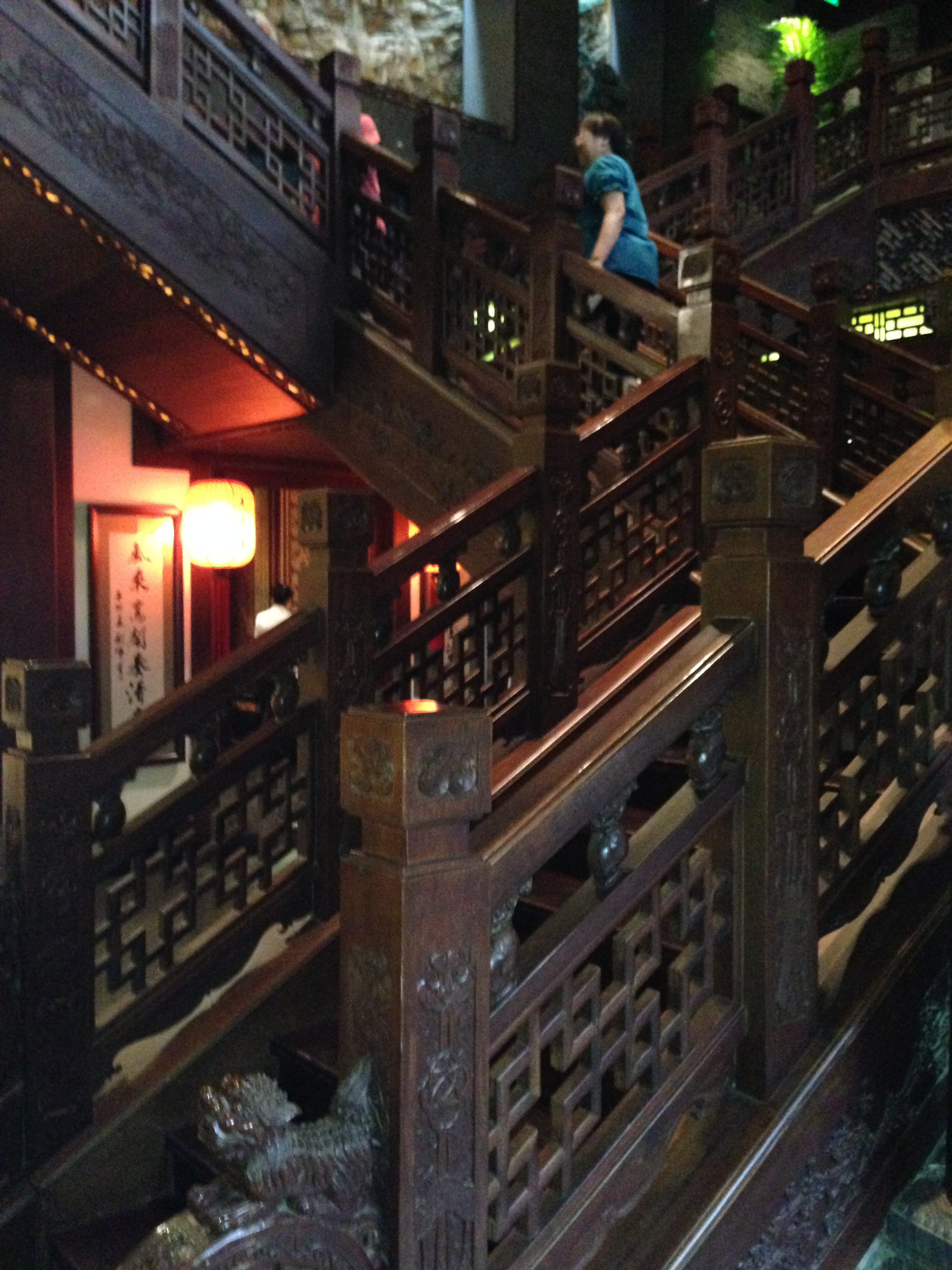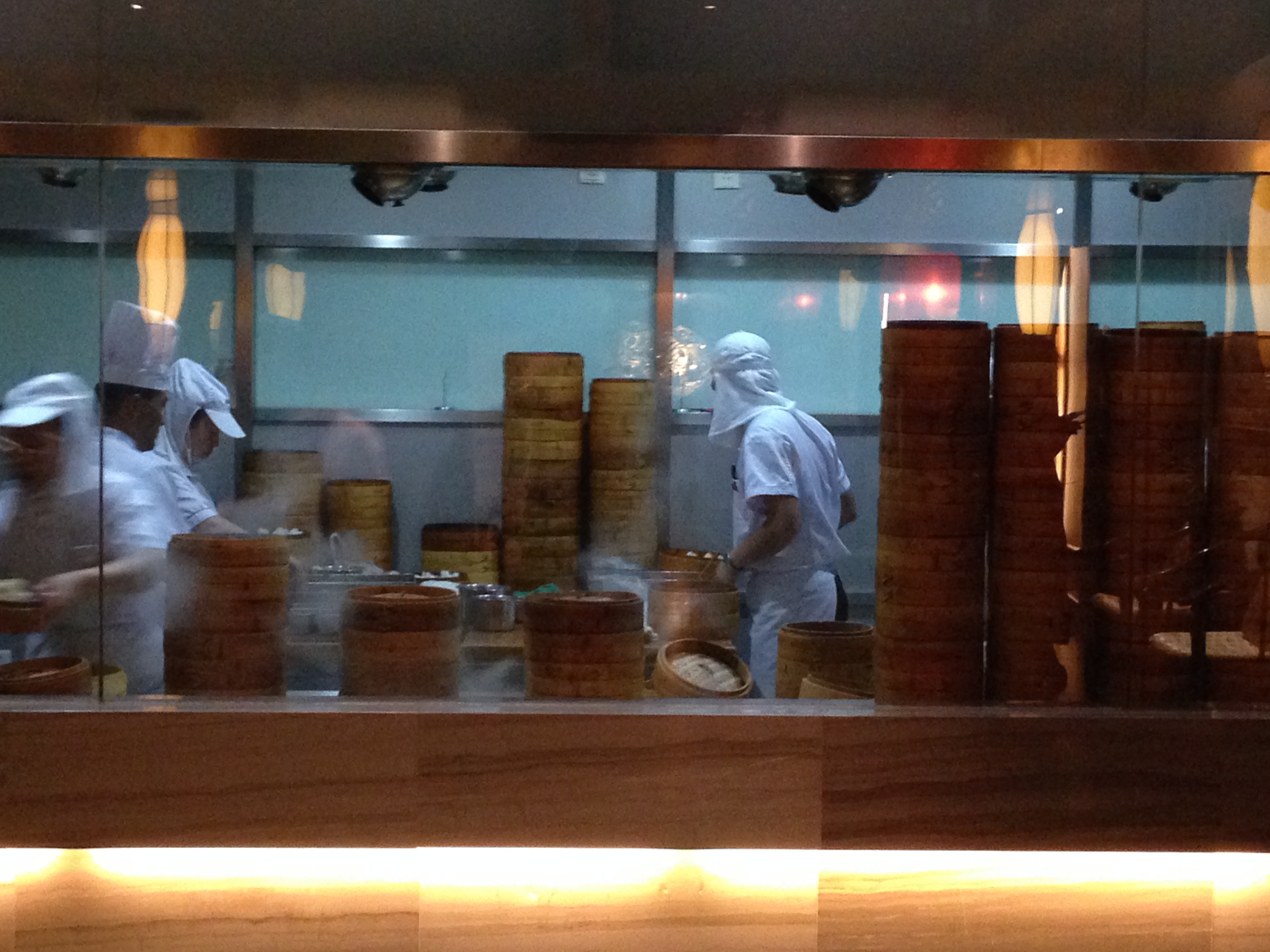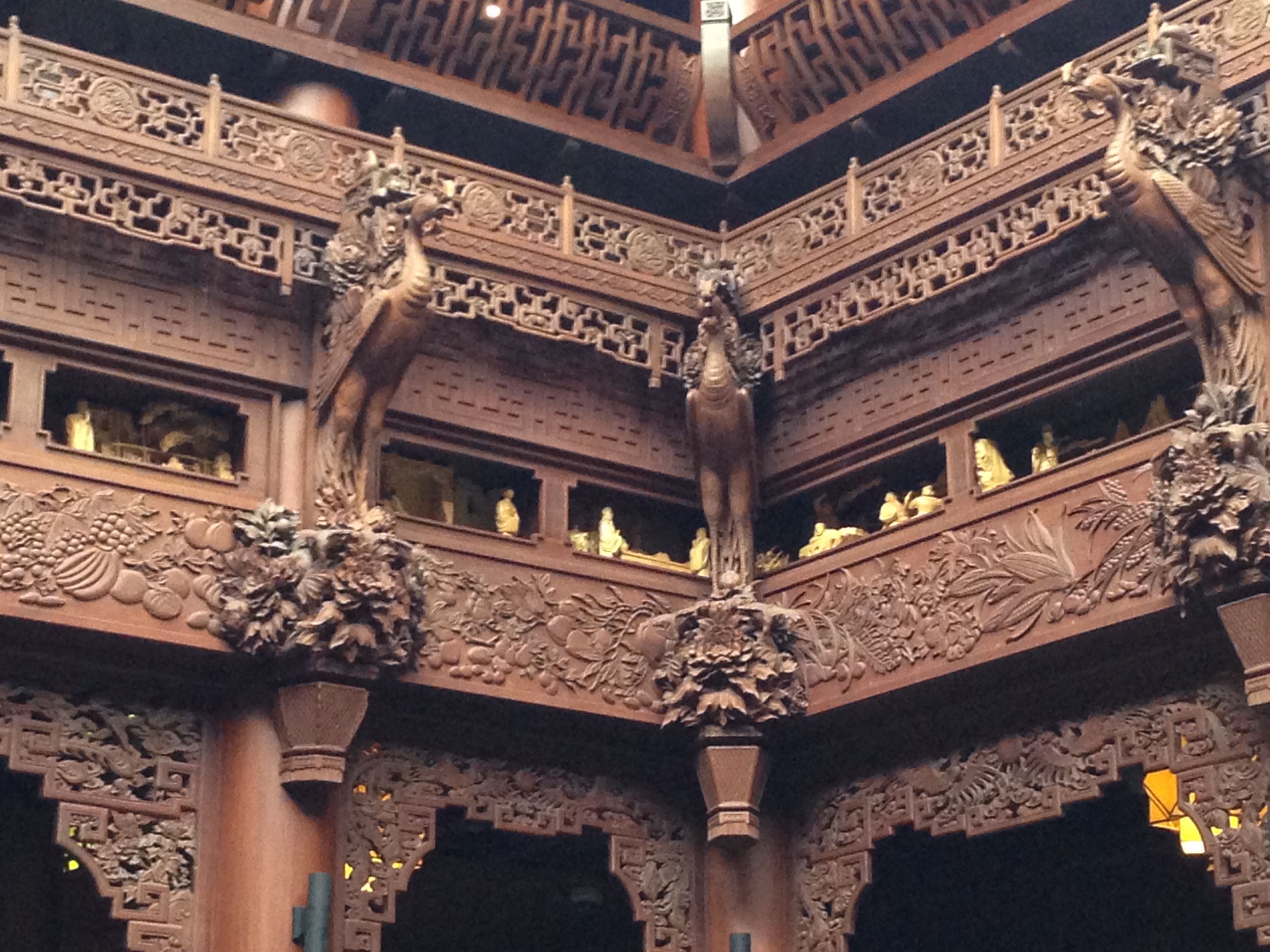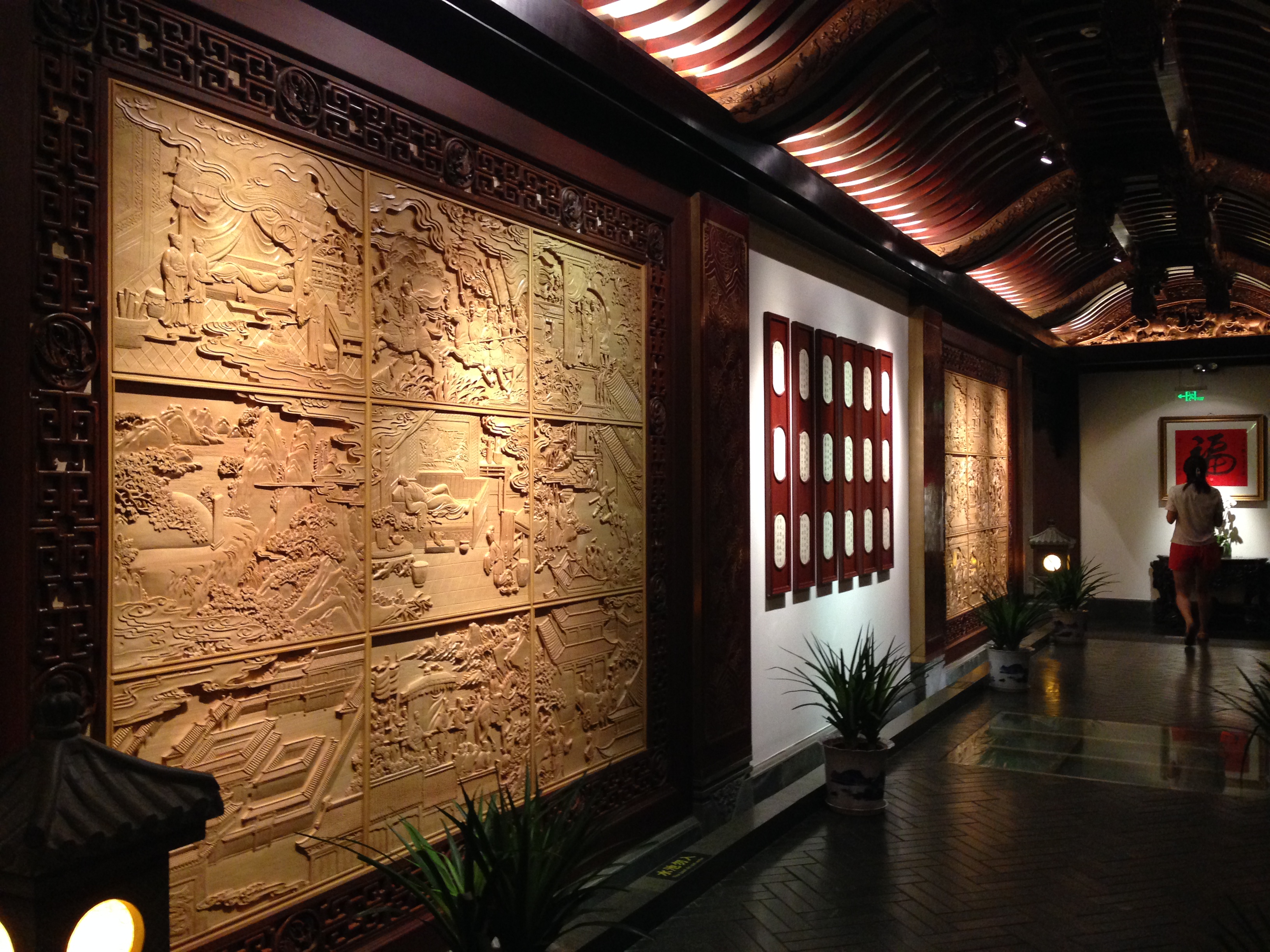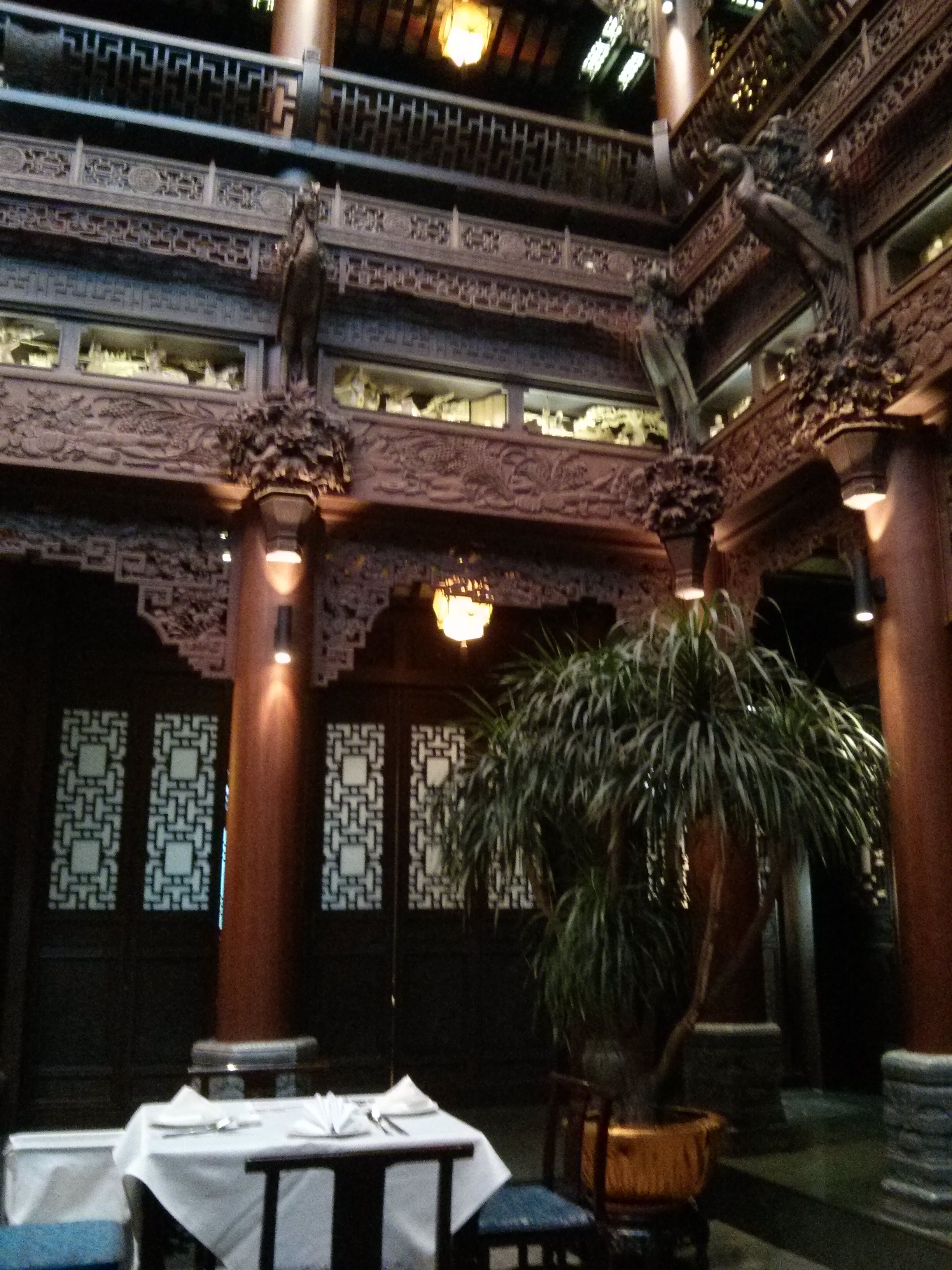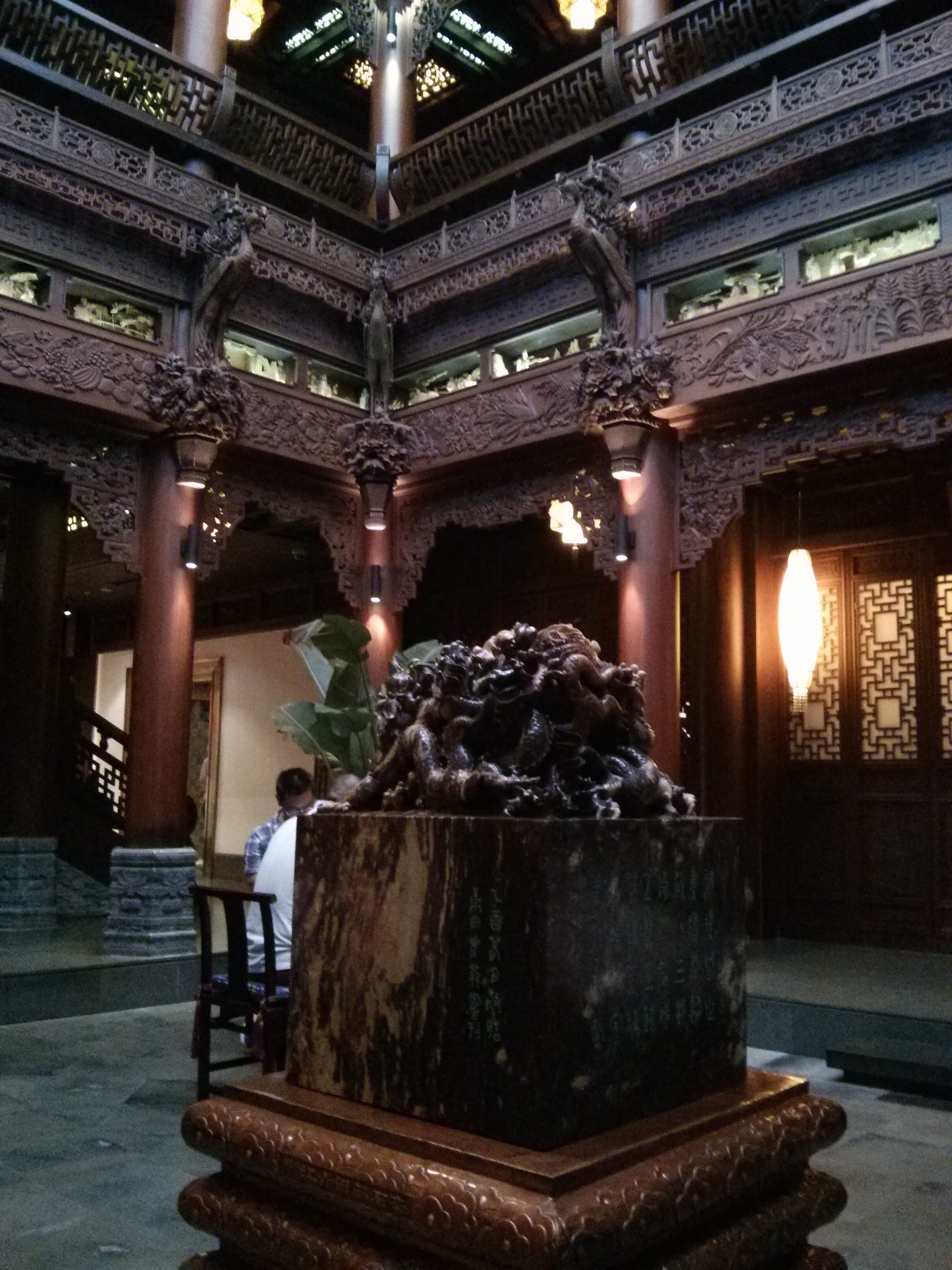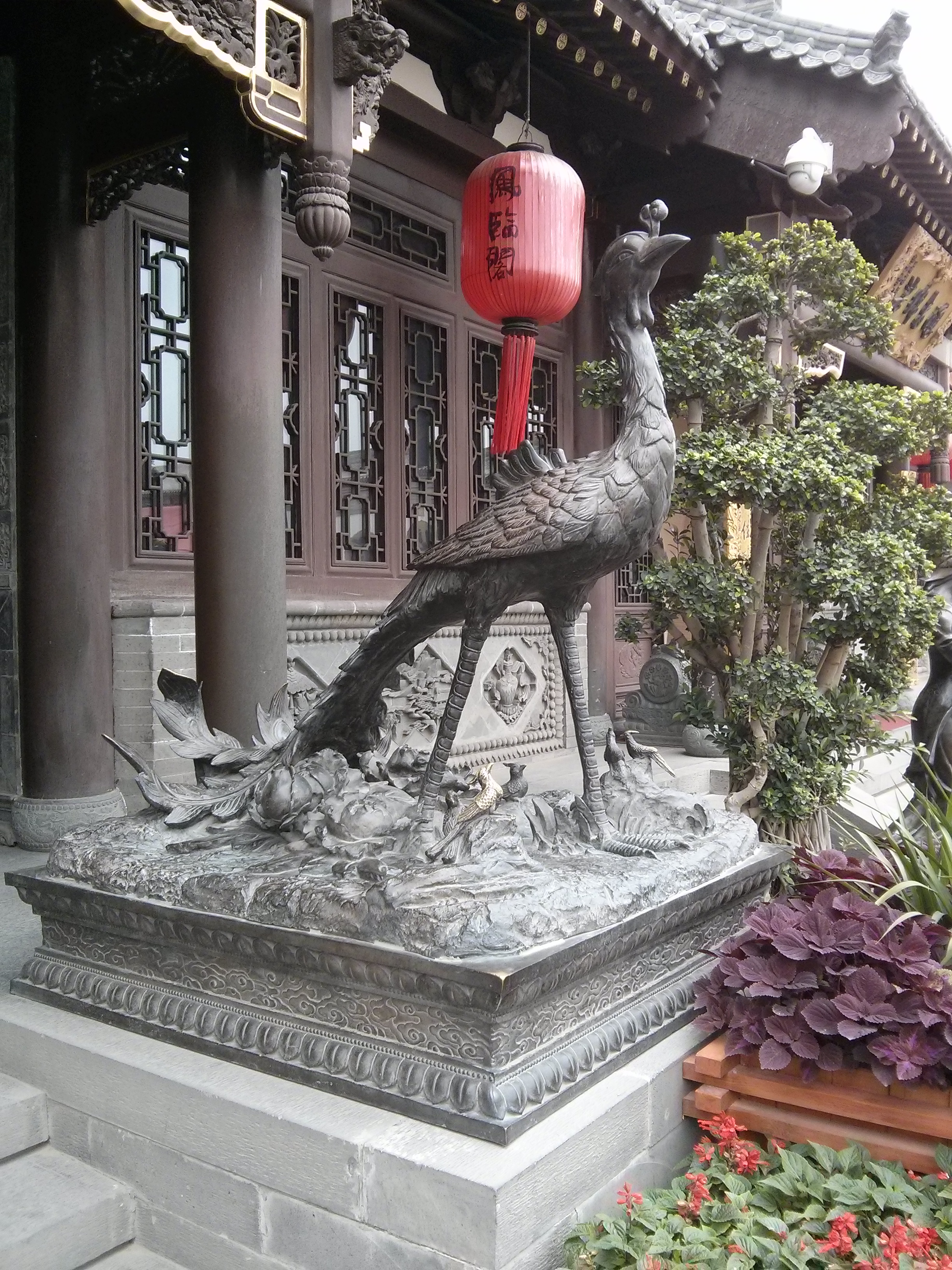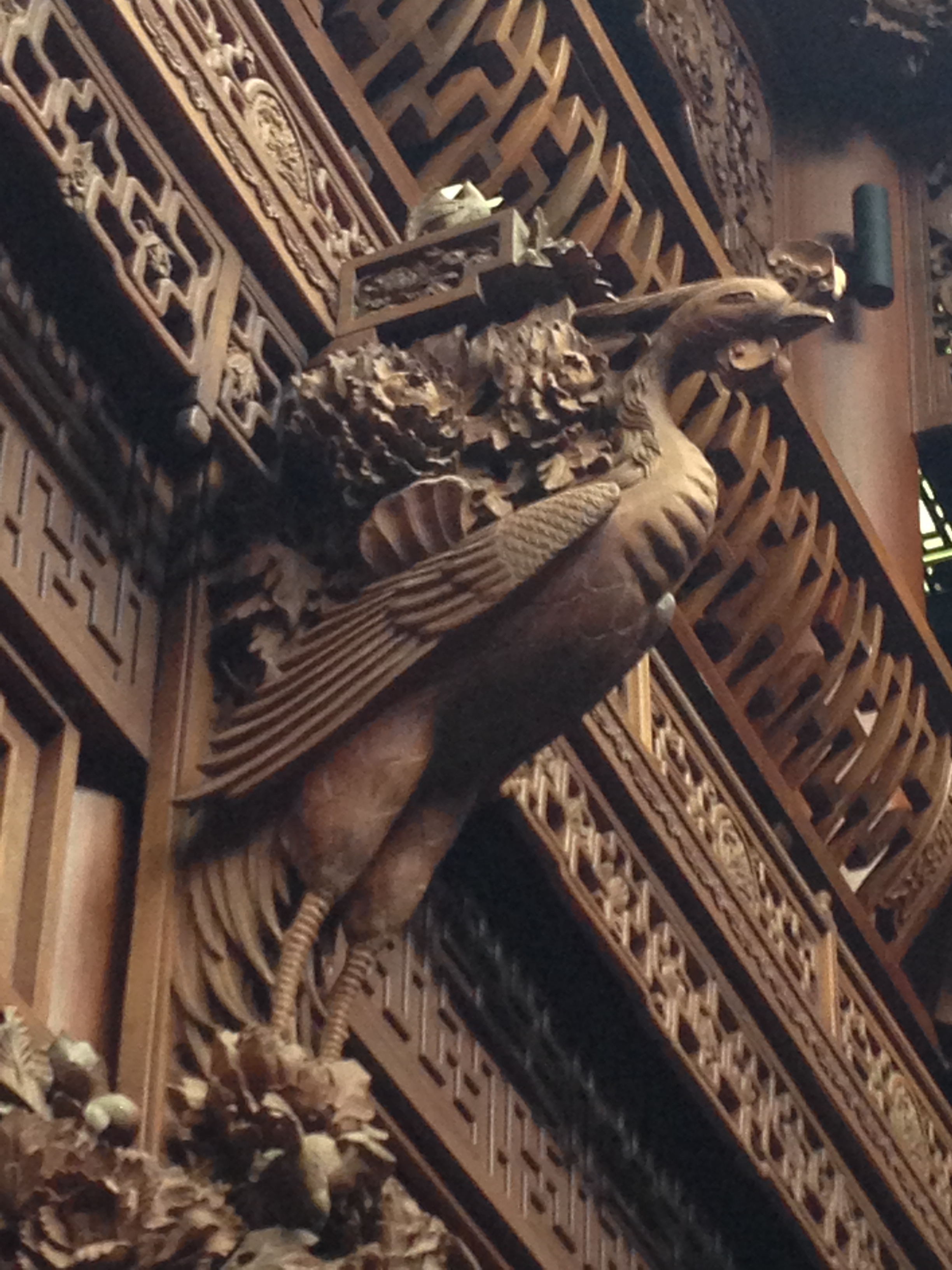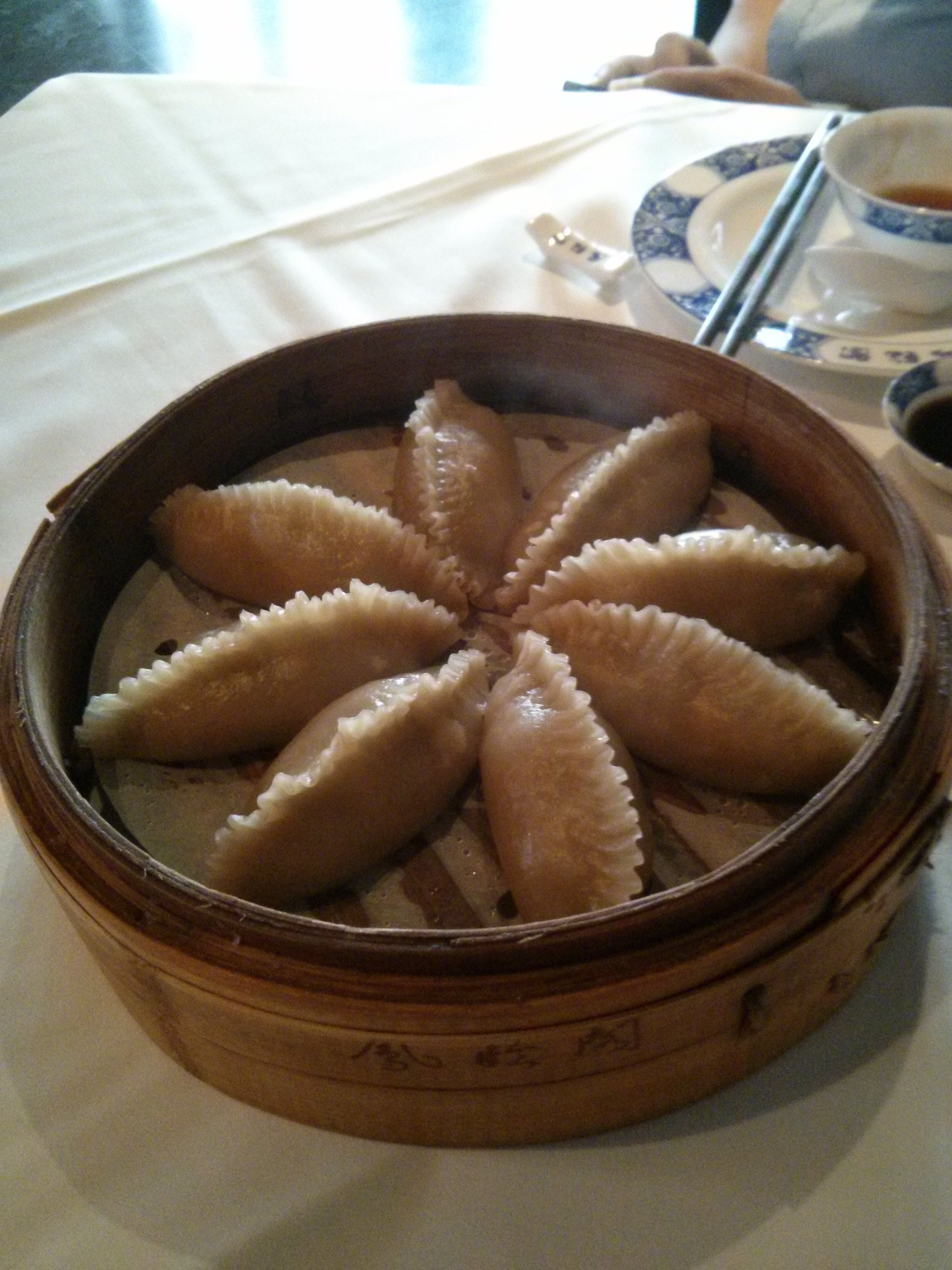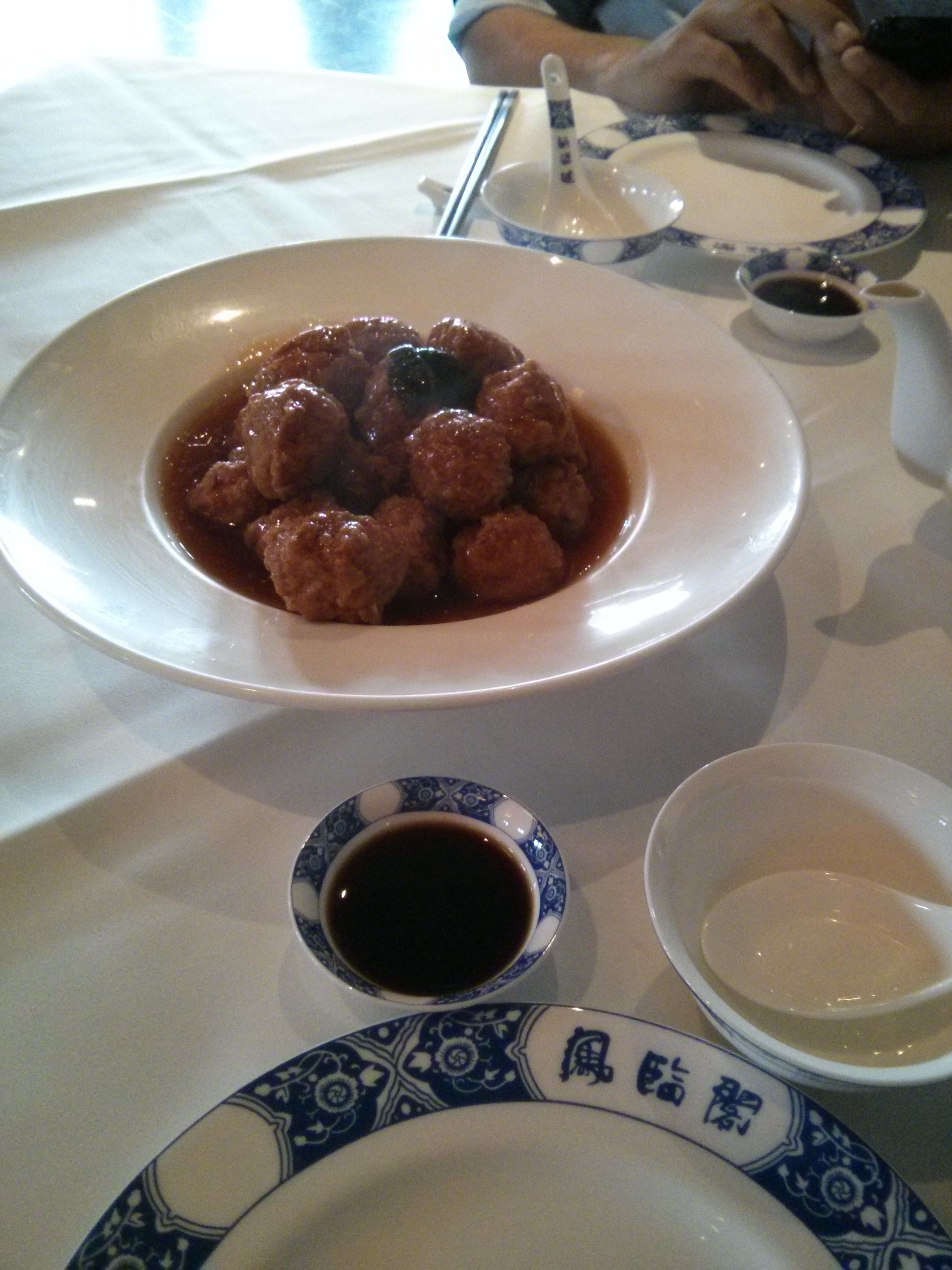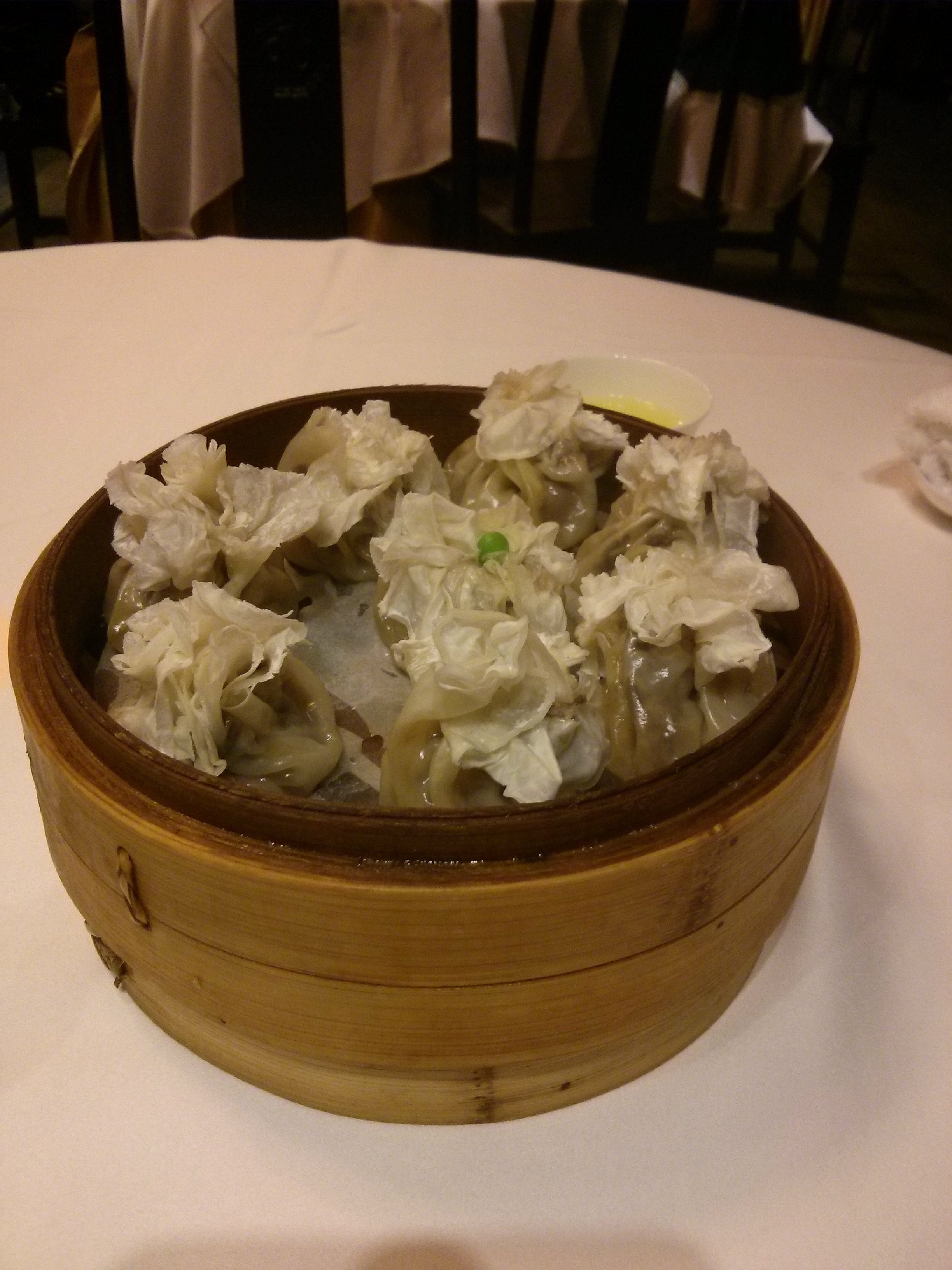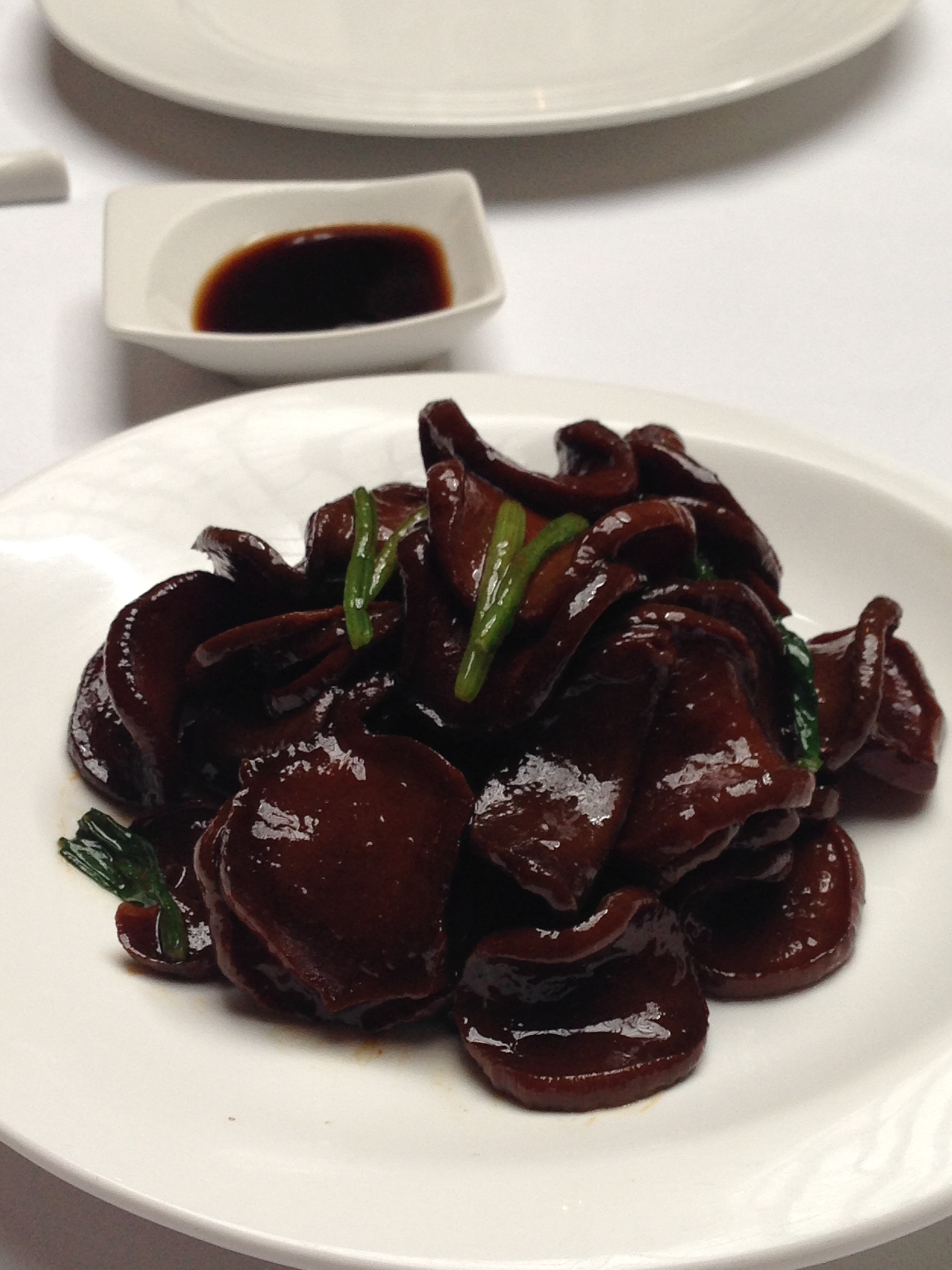Now we get to the real reason that we came to Datong…many years ago we saw a documentary which showed Xuánkōng Sì (the Hanging Temple/Monastery) which is built into the side of a cliff face near Mount Heng which is about 60 km outside Datong. My darling bride… immediately upon seeing this…and long before we thought of such a trip..decided this was a bucket list item for her… and therefore a must do for us. The guide told us that the temple dates back to about the 4th century which quite frankly is astounding when you see this rickety building dangling off a sheer rock face.
The Hanging monastery is shaped to resemble a dragon with an open mouth and has about 40 rooms linked by mid-air walkways. The monastery has been adopted now by 3 religions (Buddhism, Daoism and Confucianism). It appears to be perched on skinny stilts but they assured us that the beams buried deep into the cliff were bearing the load. So much so that the tour guide suggested that we shake the (seemingly) supporting pillars…we did not try this.
Having seen some of the modern building techniques in China…I would not get into a modern Chinese building that is attached to a cliff face. Needless to say I was reasonably reticent to trust one that had been stuck up there 1600 years ago. The hand rails were at a bit over knee height and the paths were about one and a half persons wide. So if you wanted to try an overtaking manoeuvre one of you was hanging over the side looking at the sheer drop. Not sure exactly how high up you are when you do the climb to the temple, but you are certainly high enough to die if you fell off and those with vertigo should not even think of trying this. I am not particularly afraid of heights but there were times up the mountain when I was a little concerned for my future longevity.
After the hanging monastery we headed to the Yungang Grottoes which are a series of over 250 caves 16 km west of Datong. Wiki tells me that there “are over 50,000 carved images and statues of Buddhas and bodhisattvas within these grottoes, ranging from 4 centimeters to 7 meters tall”. The guide was telling us that the biggest Buddha was about 17 metres and that there were a few others around the 13-15 metre mark…so I think wiki has some typos. The entrance to the caves has been China-fied and the kilometre walk to the first cave is filled with brand new buildings, statues, pagodas and a bronze tree.
The region is rich in coal and until recently had a town at the base of the caves and a coal mine about 500 metres away on the other side of a small lake/pond thing. Interestingly the government thought that the town folk were causing too much dirt and were destroying the caves…so they moved the whole town away and built temples and the new China exhibitions that you see everywhere else. A year after displacing an entire town…they found that the dirt continued so they shut down the coal mine…go figure.
The Yúngāng Grottoes are a UNESCO World heritage listed site and date back around 1500 years. Unlike the Dunhuang grottoes (apart from the tourist entrance route) the place has not undergone a trashy renovation attempt and are quite original. This is of course with the exception of caves five and six. The entrances to which have had wooden temple structures built. The caves 9-14 were blocked off as they too had such structures being built in front of them. From here high atop the mountain you could see sections of the great wall. Once again as you head west the wall is really more of a mud pile than a major defensive platform…but each section was built using the local materials available.
Cave 20 is the iconic image which is seen everywhere…it had the front of the cave knocked away by either the weight of the rock or an earthquake and the Buddha is clearly visible from all around. The caves are not as awesome as the Ellora and Ajunta caves in India but they are far better than the ones in Dunhuang. Either way they are an excellent attraction and well worth a visit.
The final thing that needs to be mentioned in Datong is the finest restaurant that we have hit since landing in China. This is a VERY big call as we have had some absolutely spectacular meals along the way but this place was a cut above. It is written up on Tripadvisor as Feeling Restaurant but we are not really sure what this is in Chinese. It was a five star restaurant with five star food, service, ambience and décor but at a 2 star price. We went for dinner after the caves and hanging temple and basically went back for every other meal until we left…it was that good.
It was essentially a dumpling house…and the dumplings were good…very good. But it had a wider menu and over the period we had sampled about 10 different dishes and they were all superb. The place is made of wood and stone and has intricate carvings in every nook and cranny in every room. The rooms are themed and the first night we ate in the Dragon Room and the next day it was the Phoenix Room. This theming relates to the carvings and sculptures that adorn the room…fantastic.
As for the food…the dumplings pictured above were rolled to the thickness of tissue paper on the top and were filled with all the normal dumpling things like pork and prawns etc. But the thinness of the outer layer without any loss of structural integrity was impressive. The standout dish for us was the abalone mushrooms (right hand side)…these were sliced thin and marinated…wow..so simple but amazing. As I mentioned we sampled about 10 different dishes and they were all of highest quality as was the service. We ate 3 meals here having between 3-4 dishes plus 3 beers and not one of the bills reached $20.
